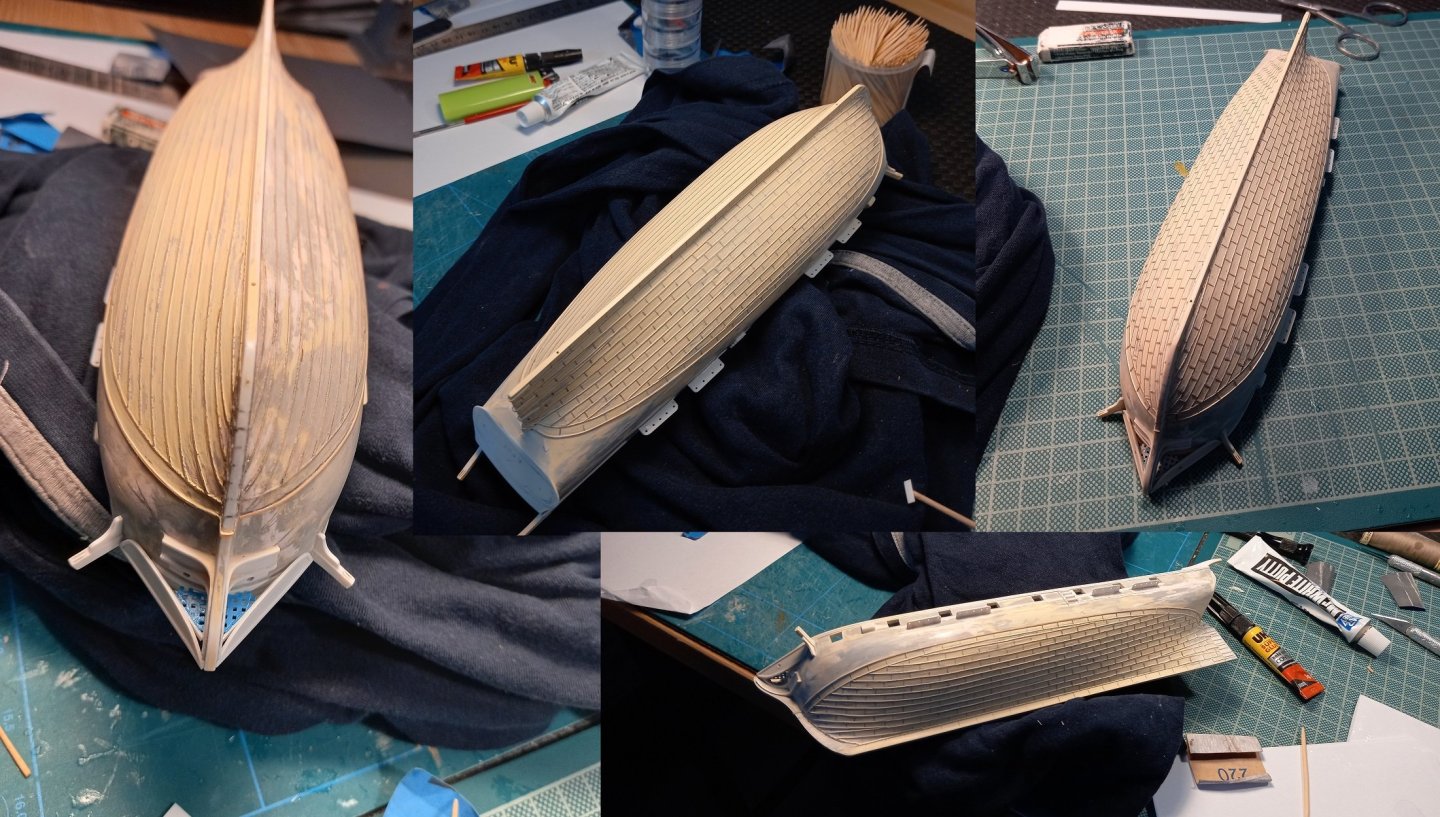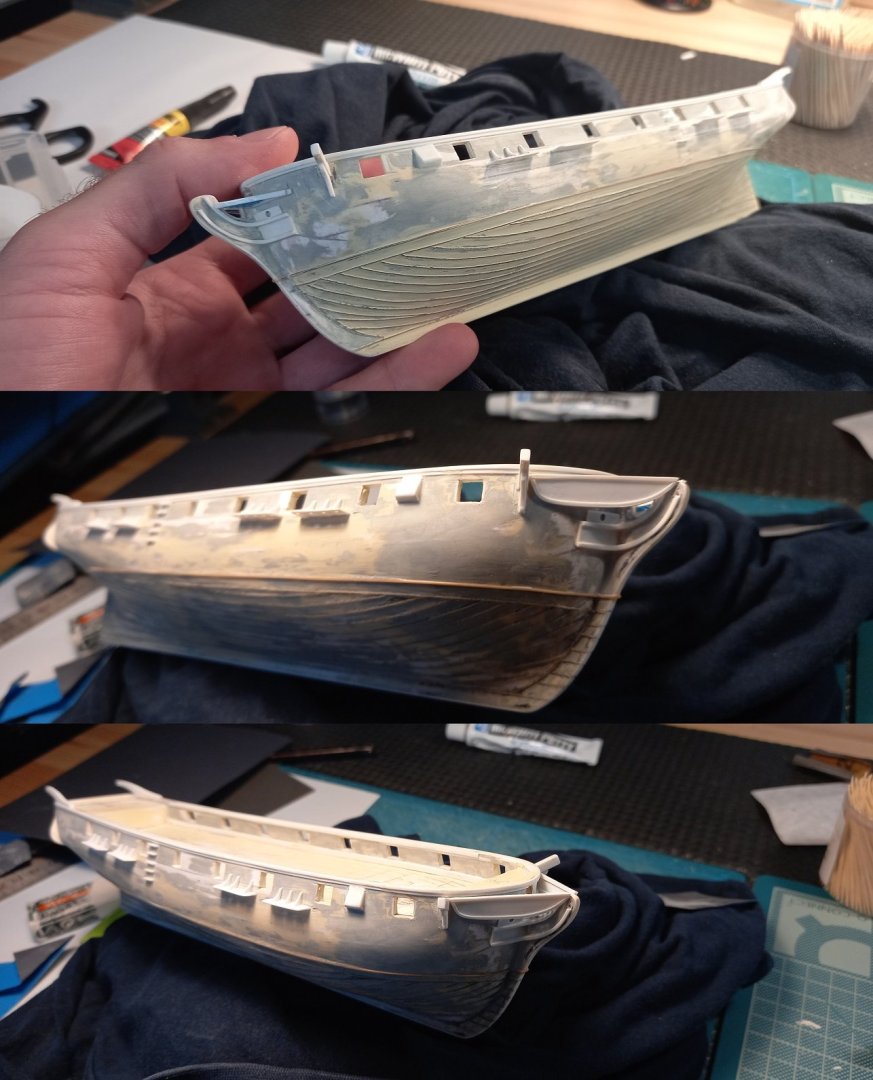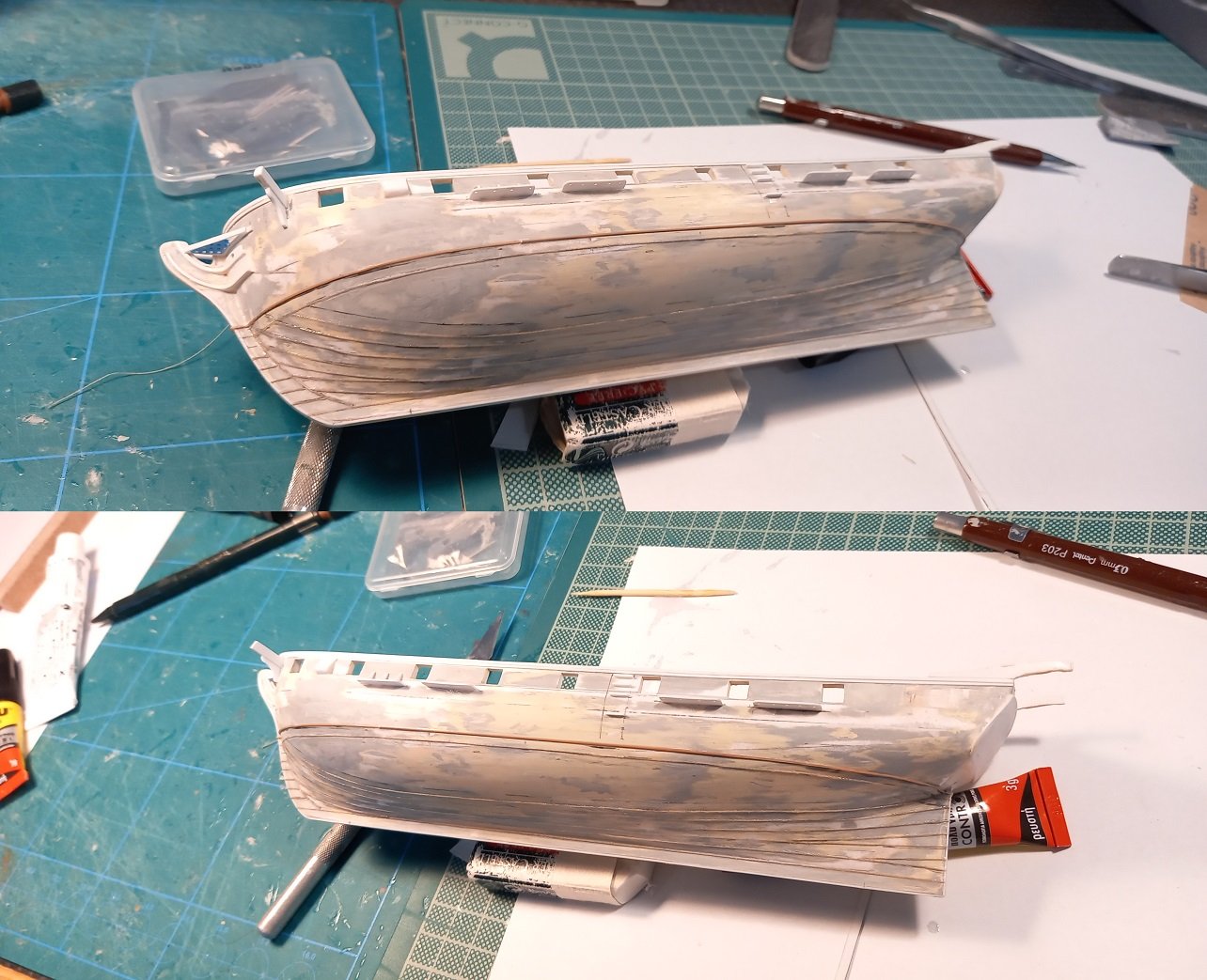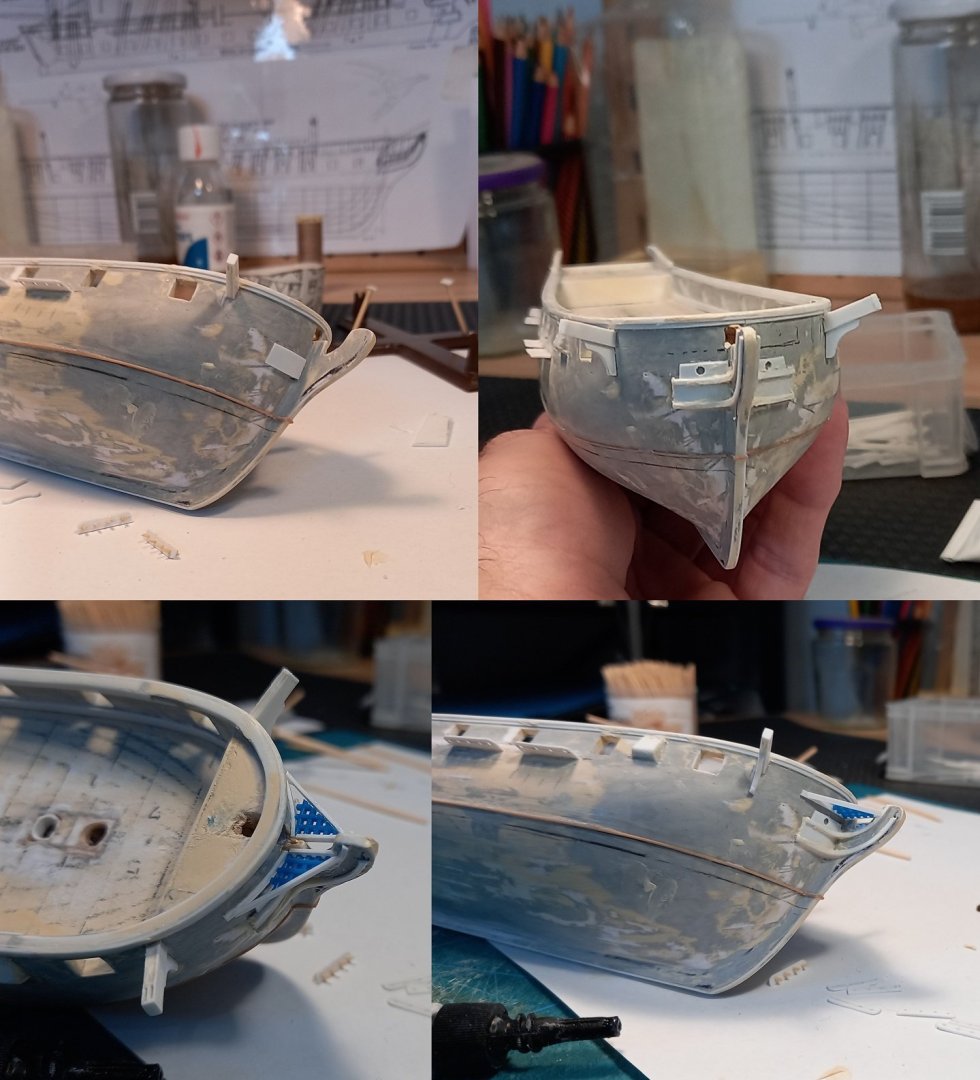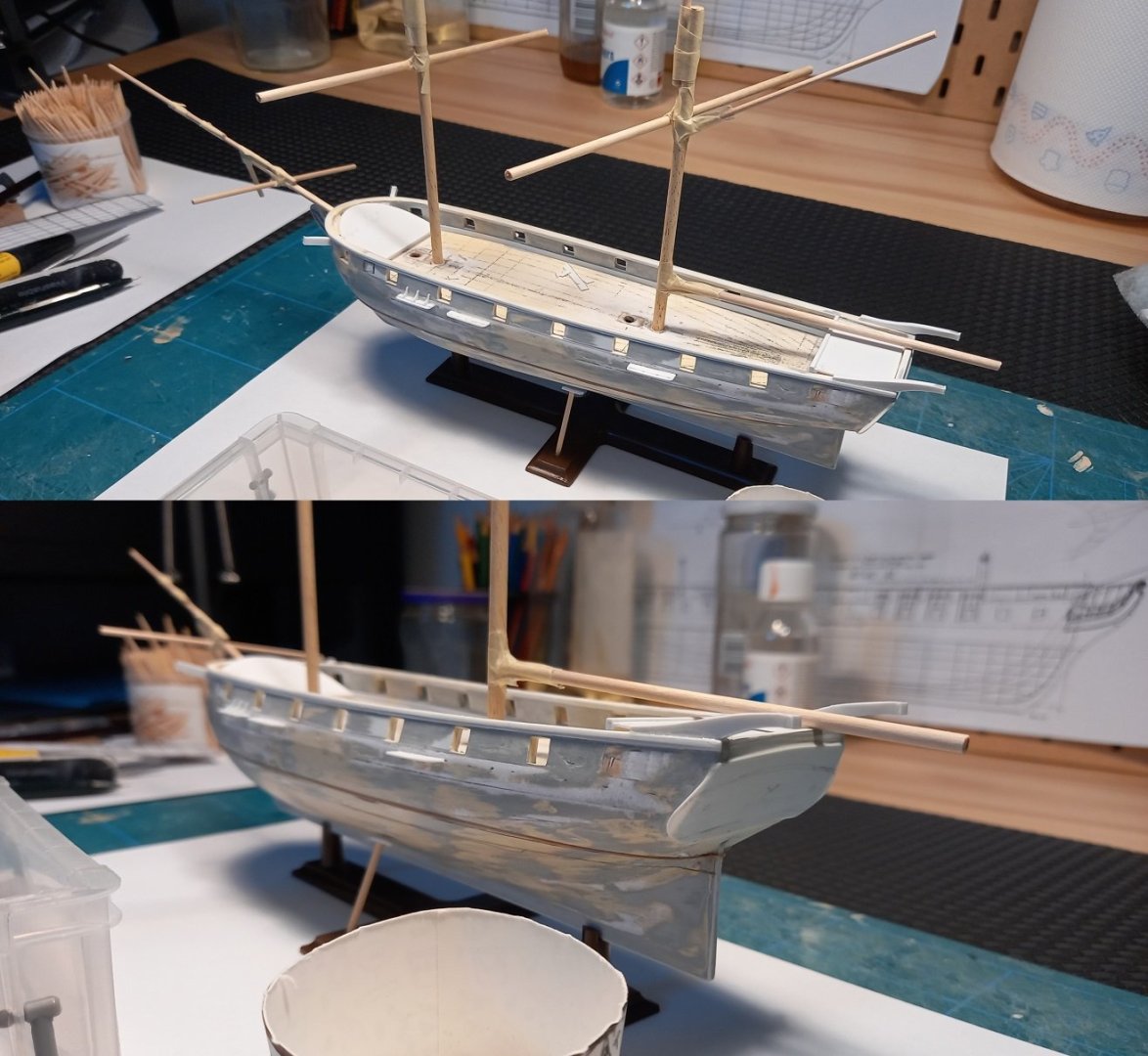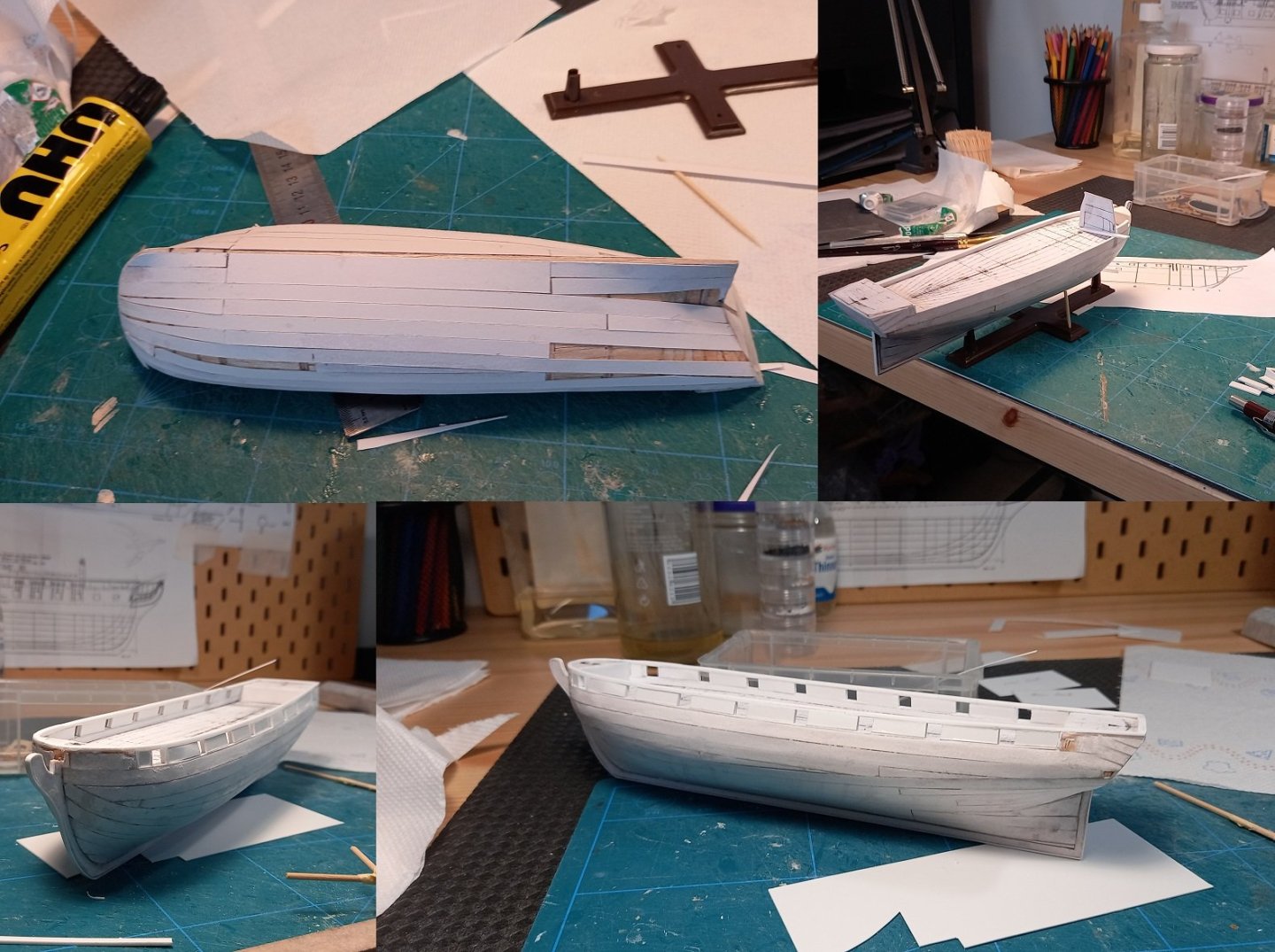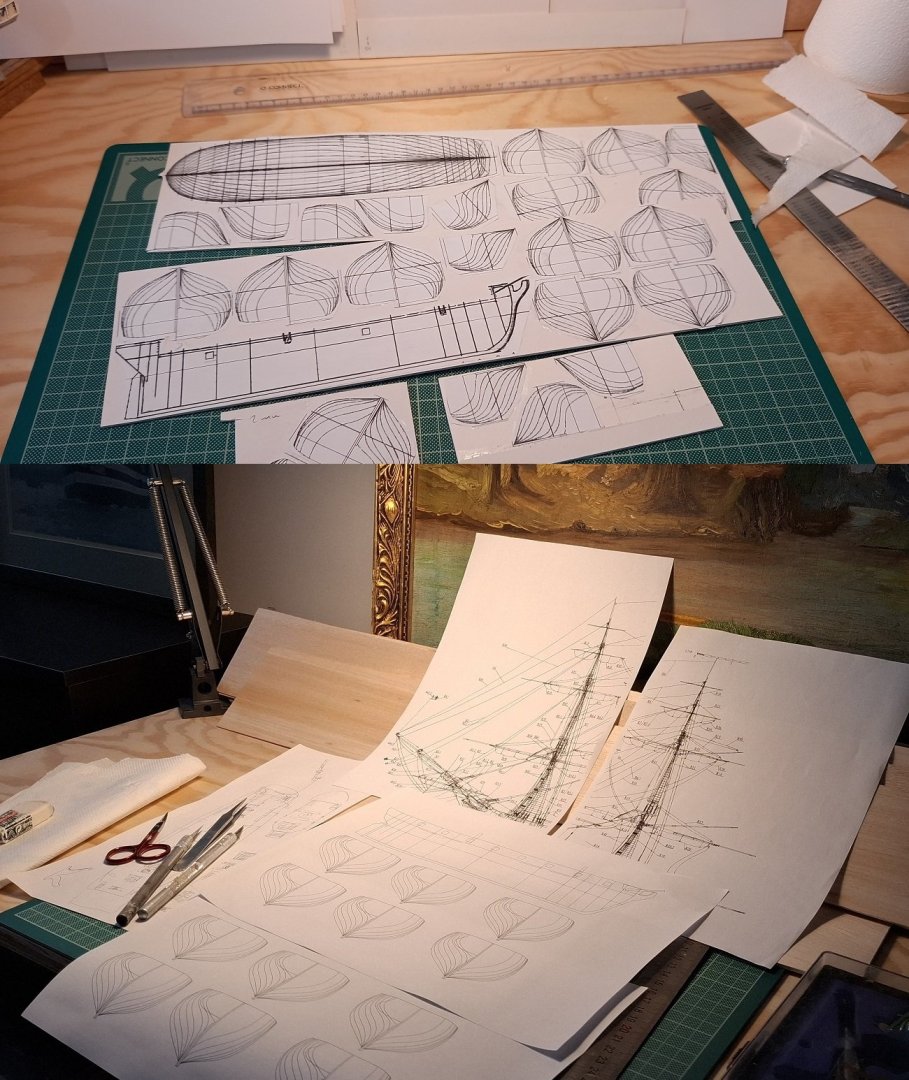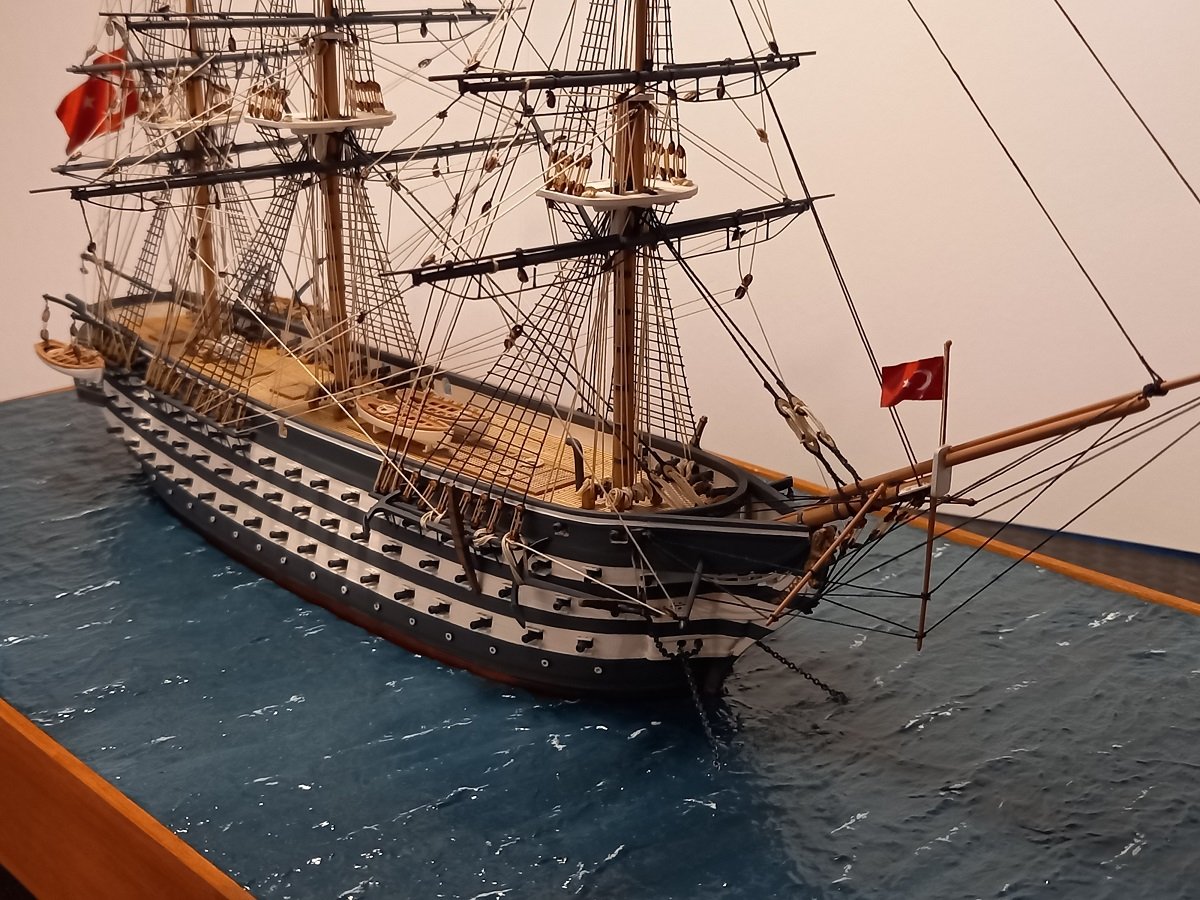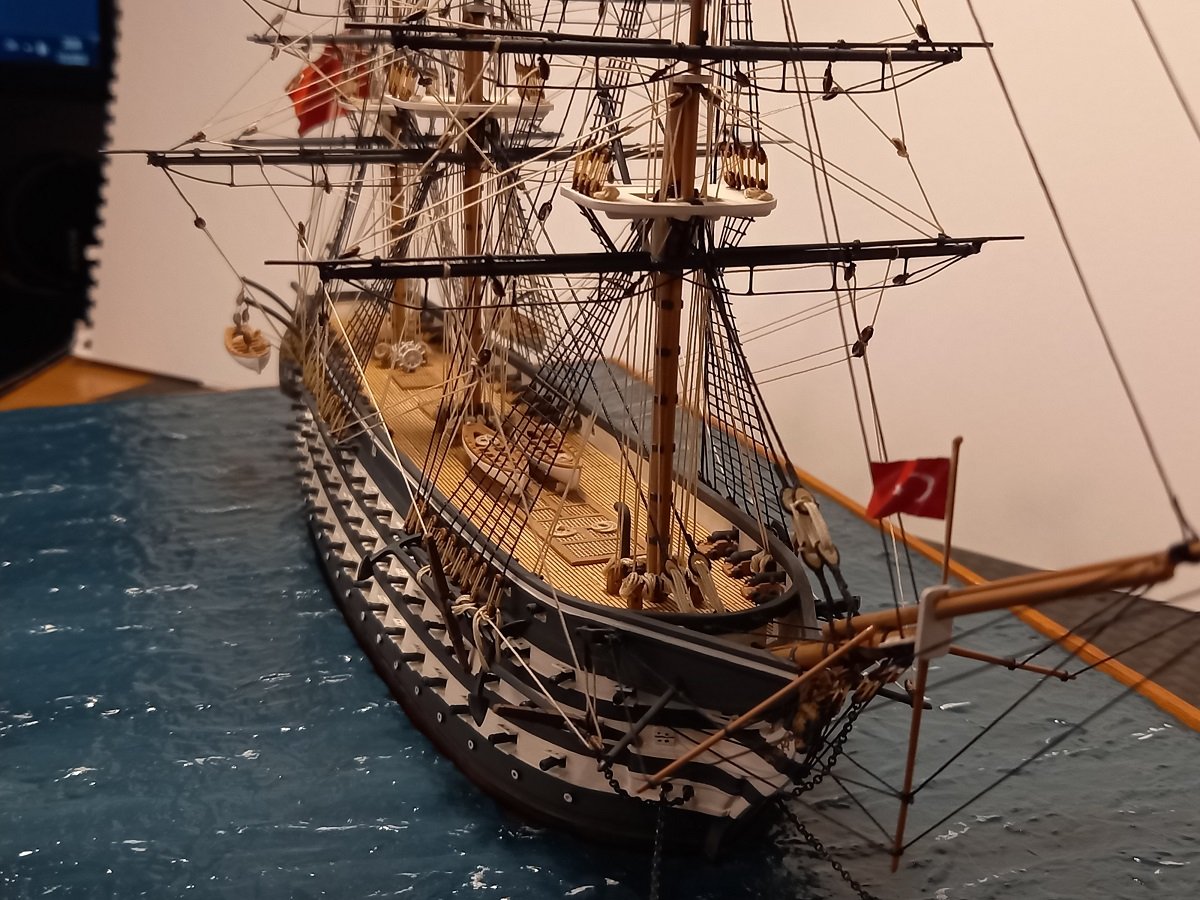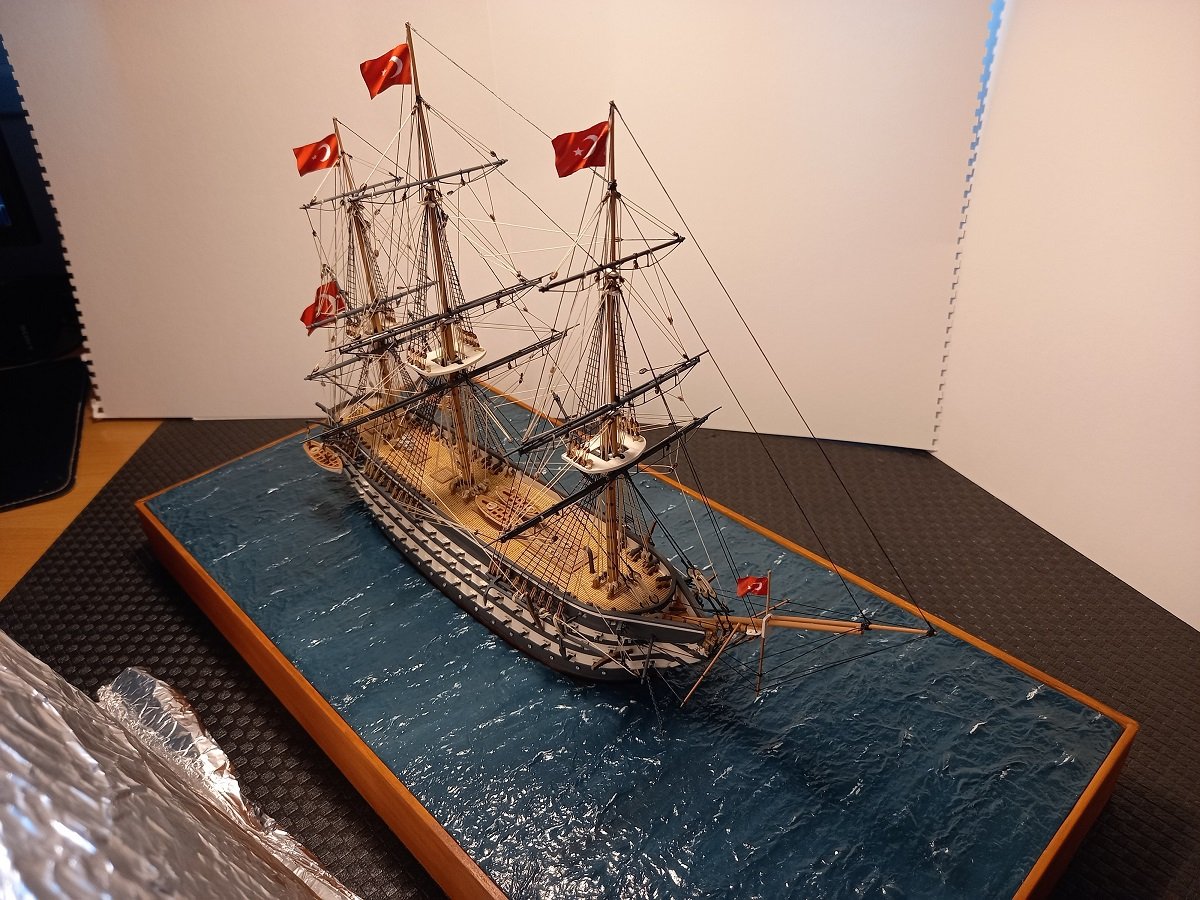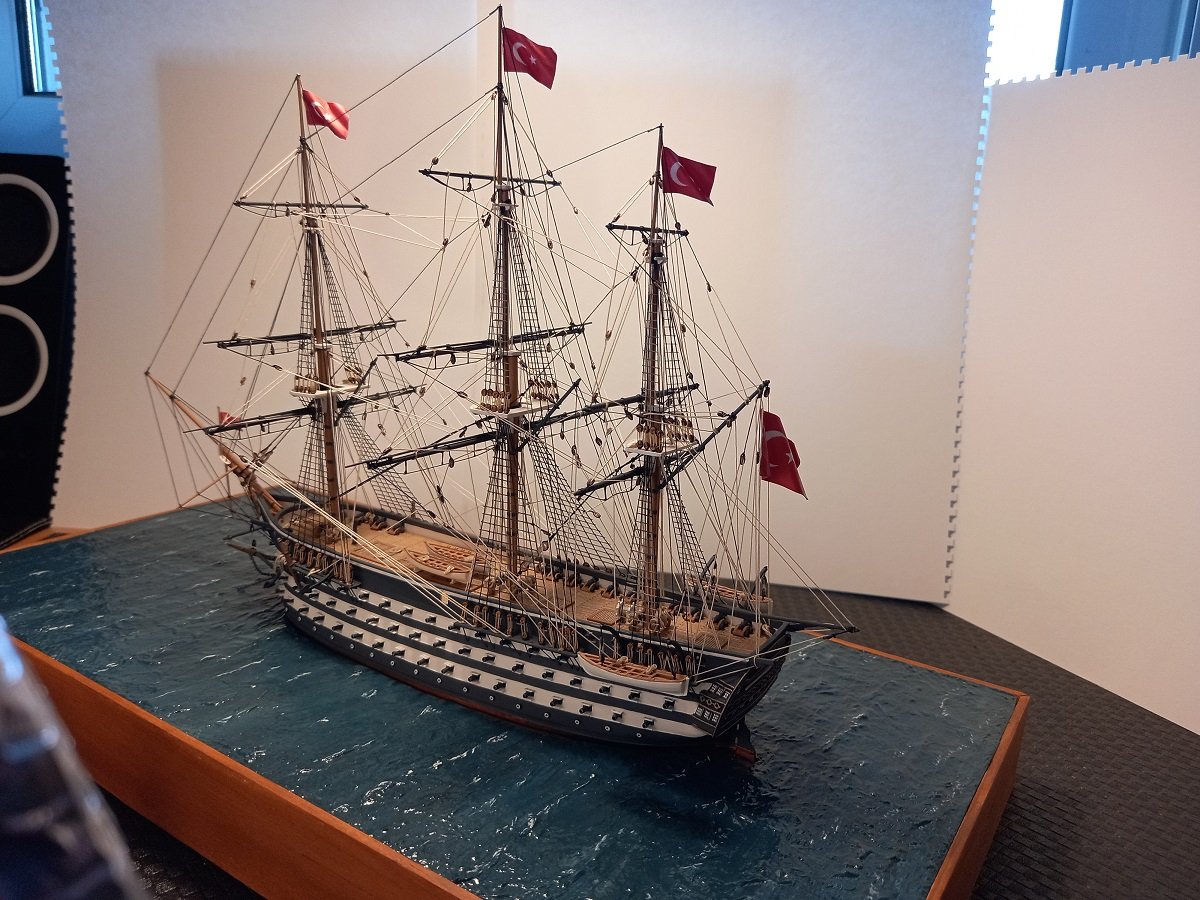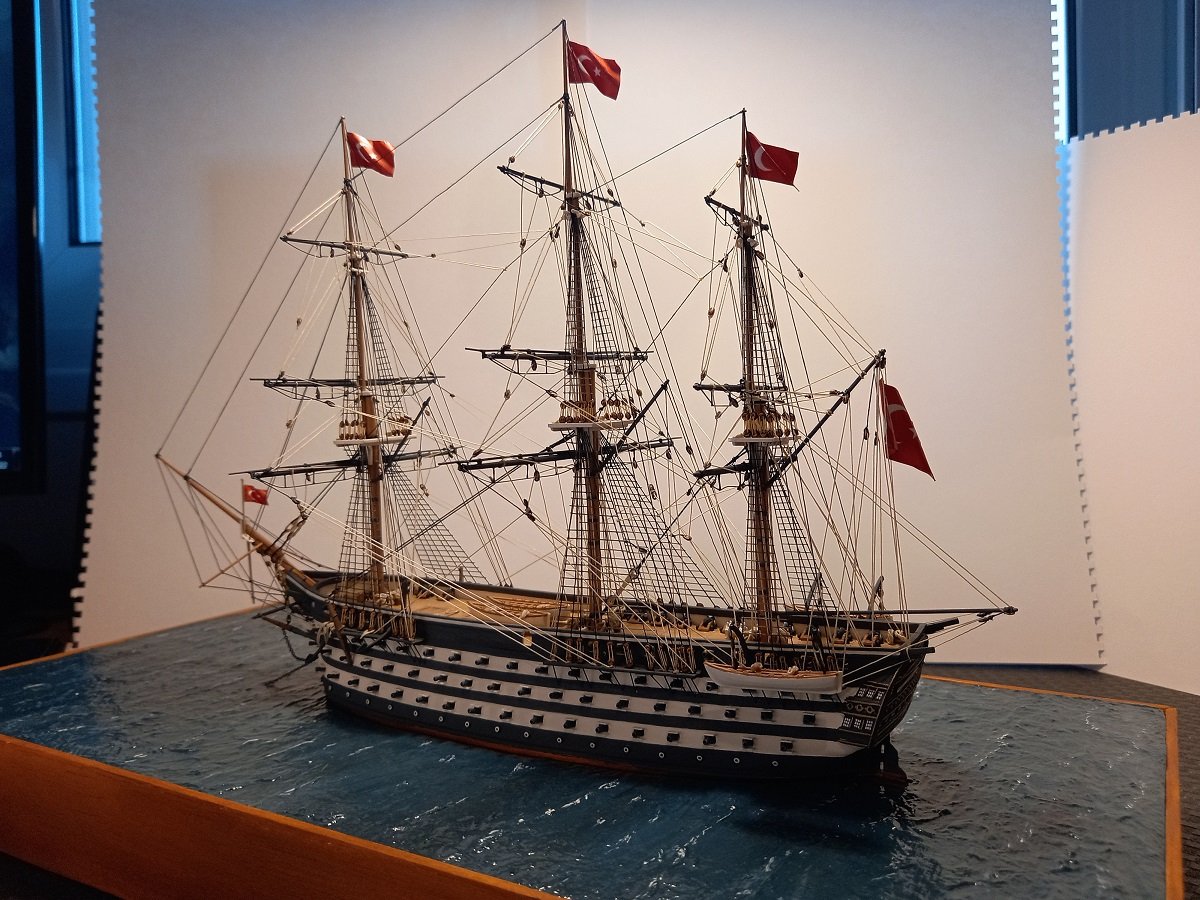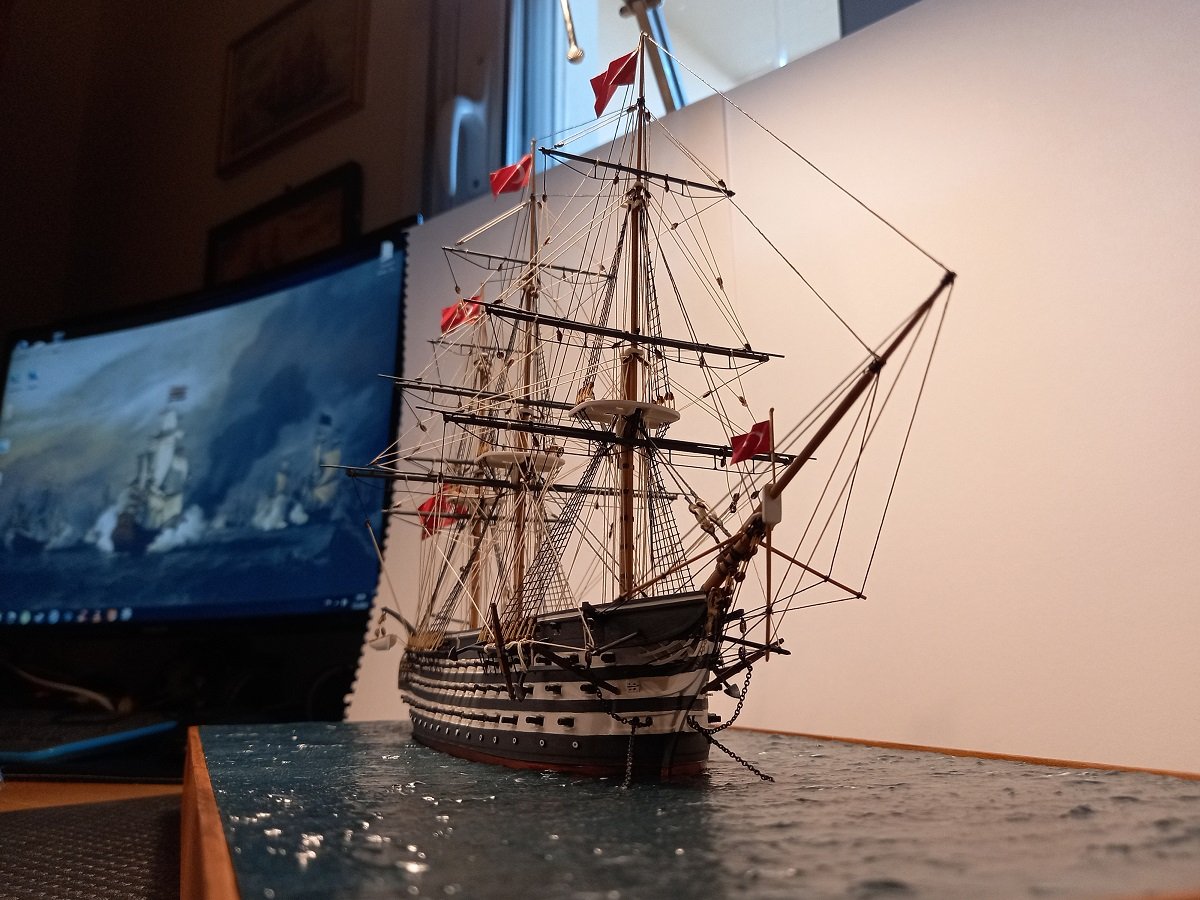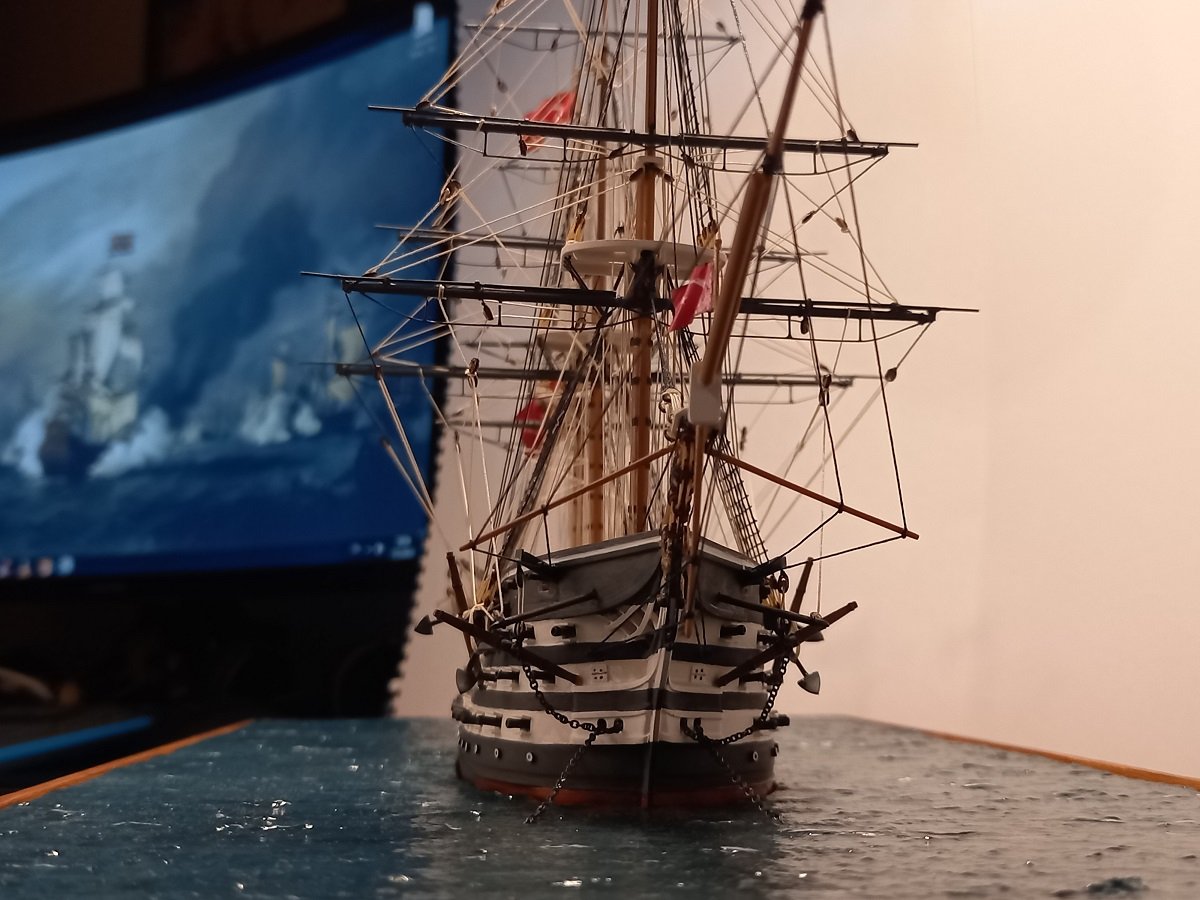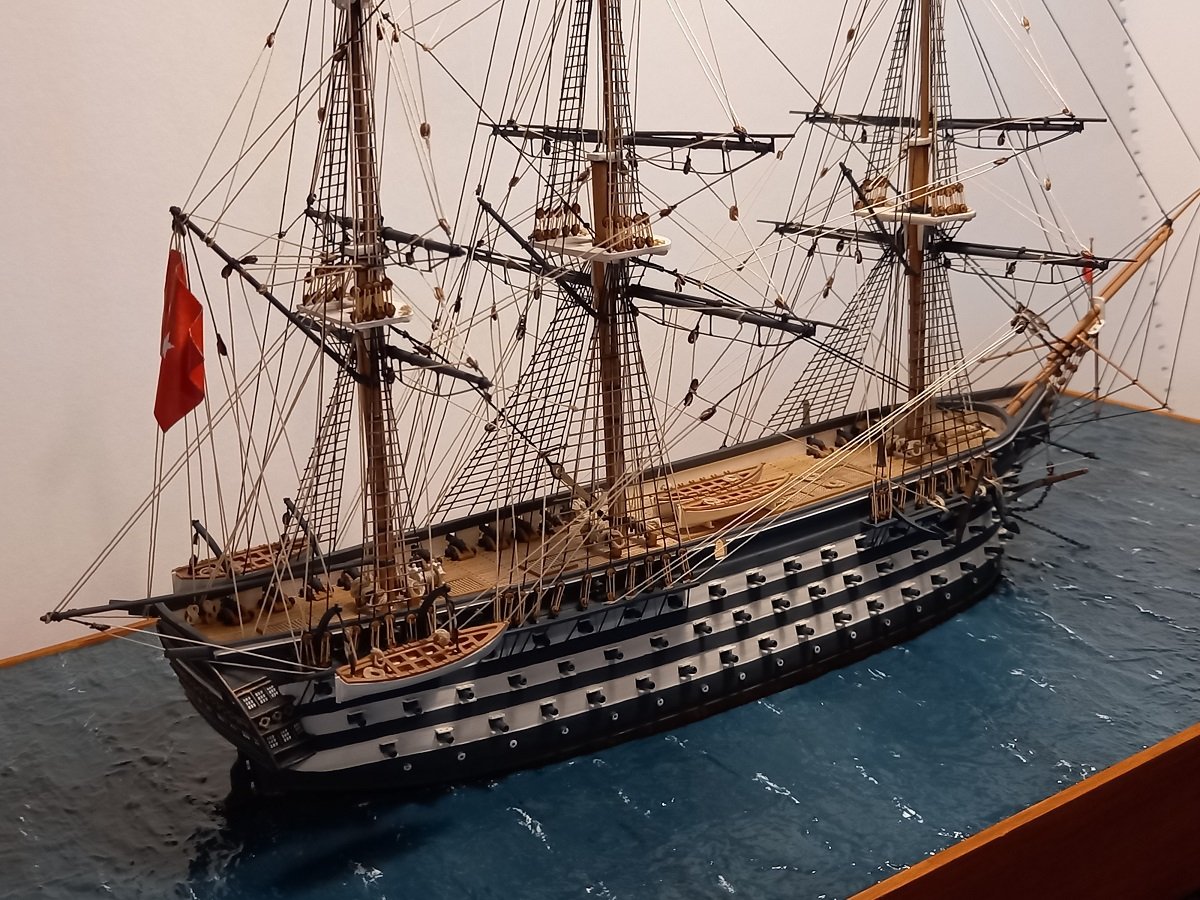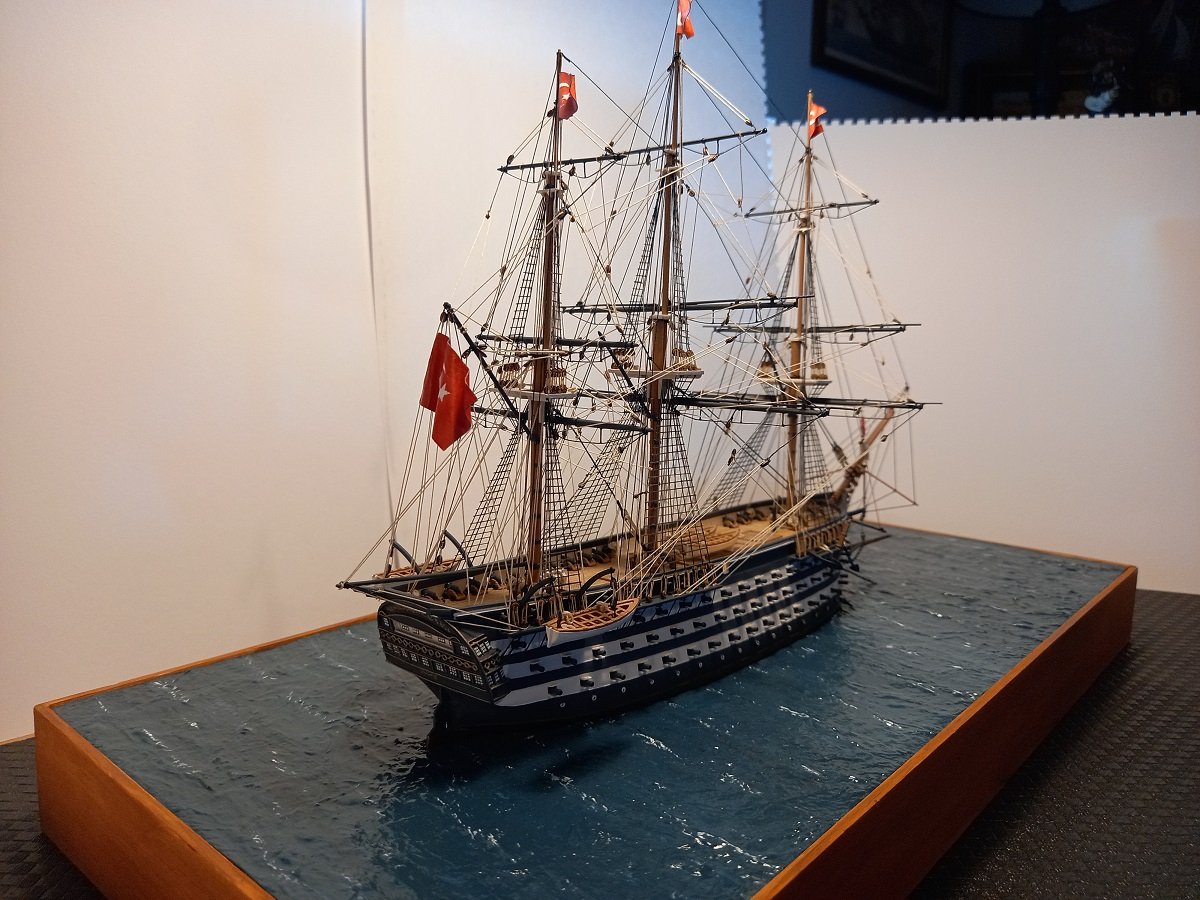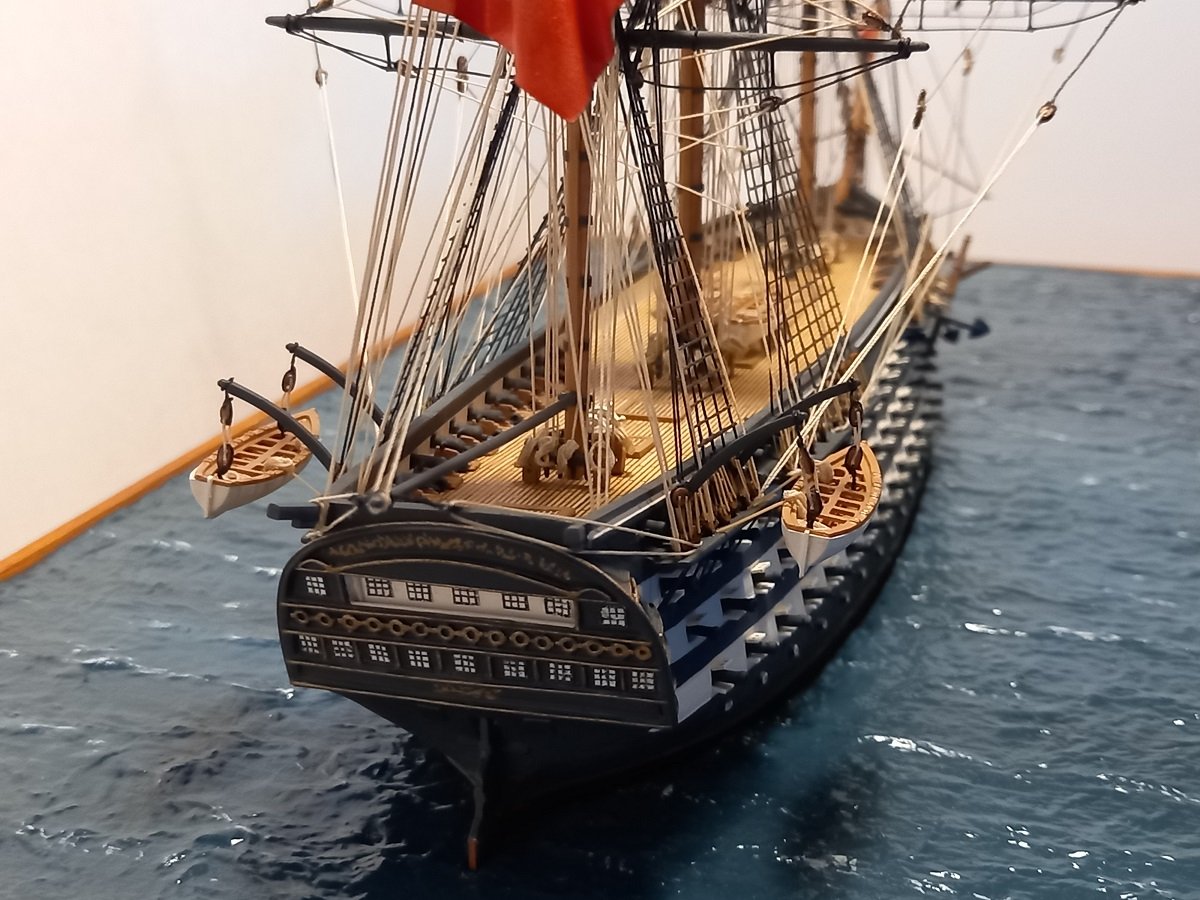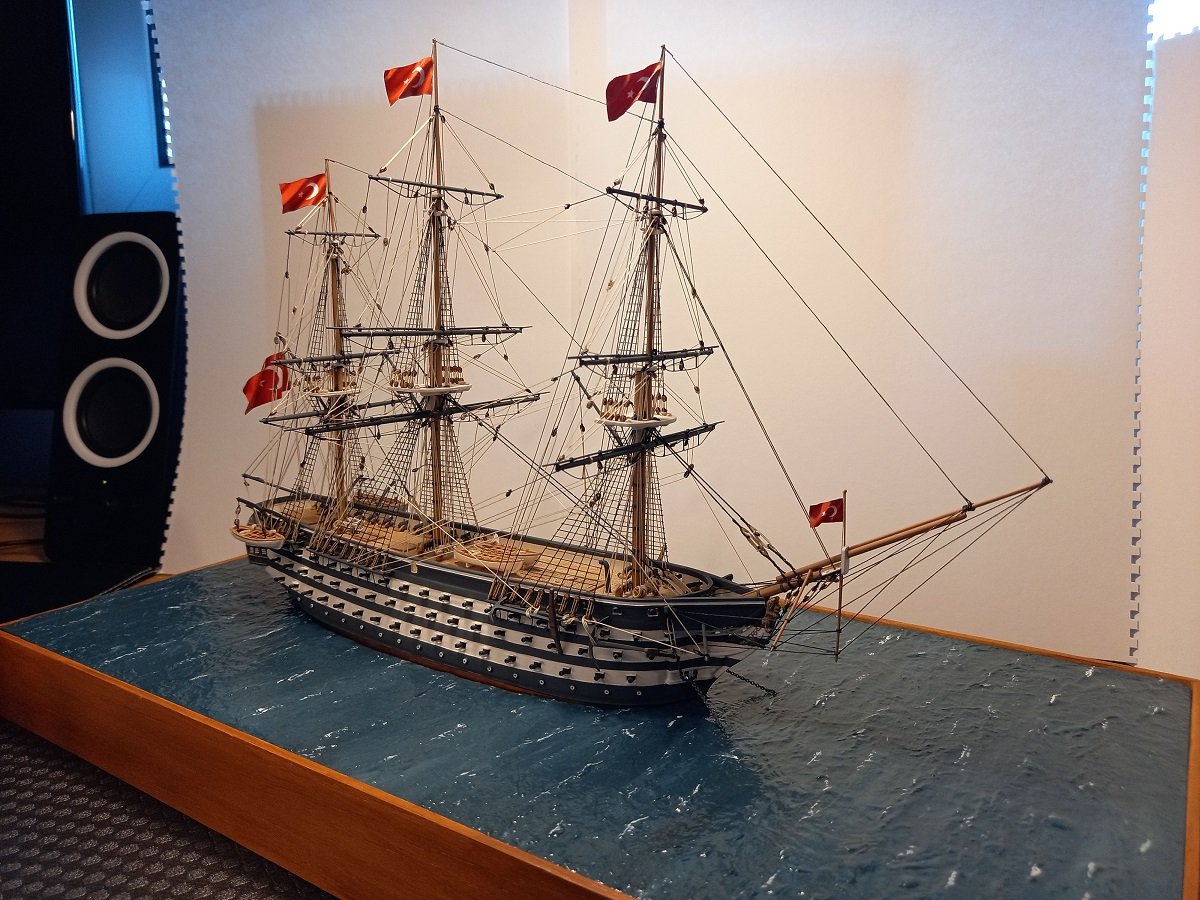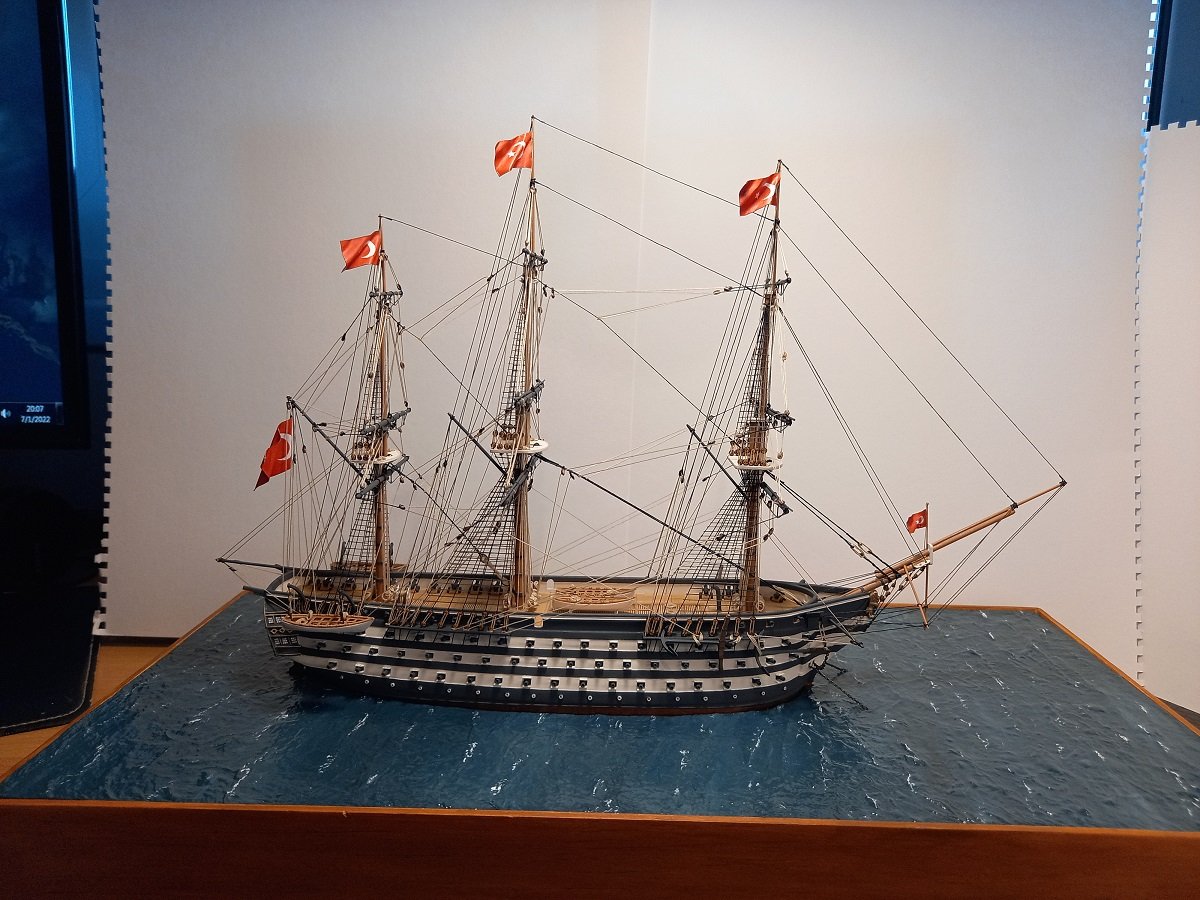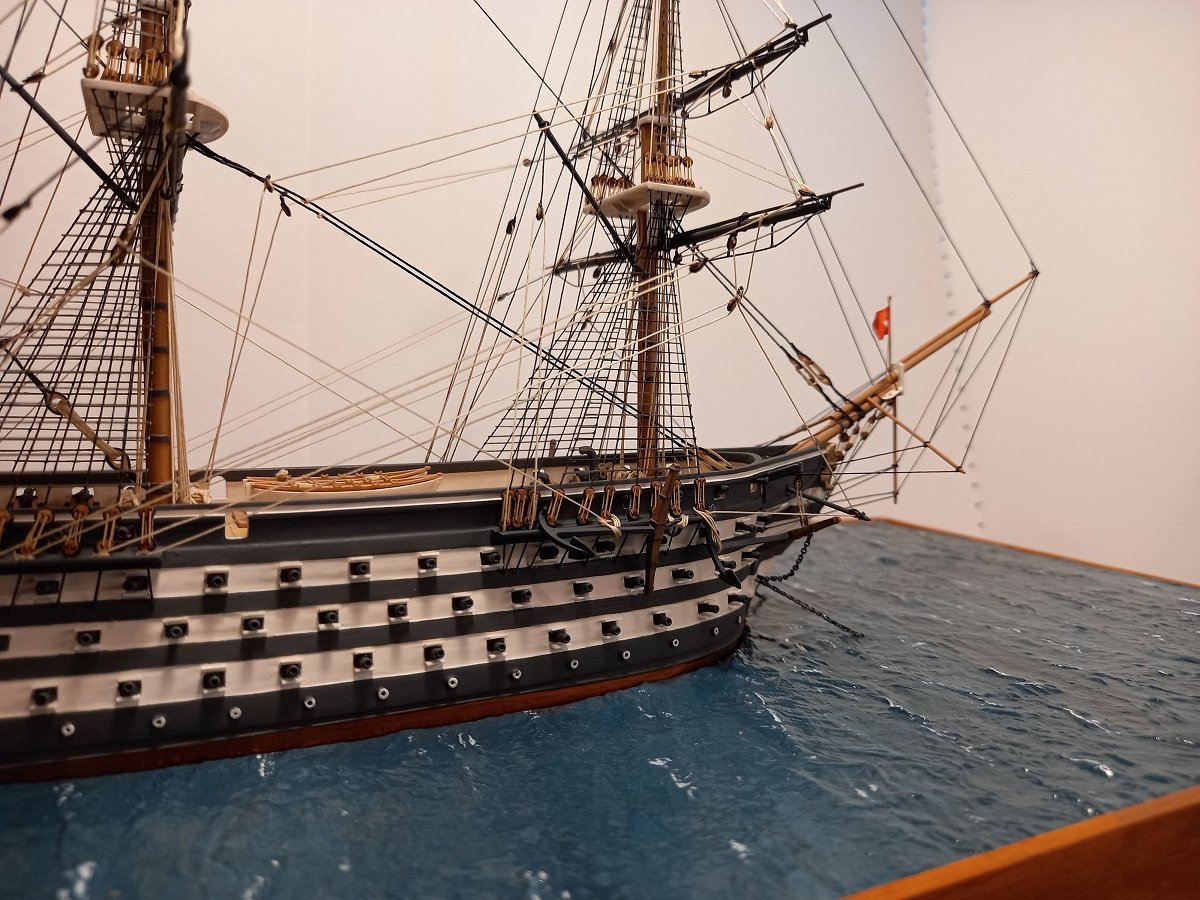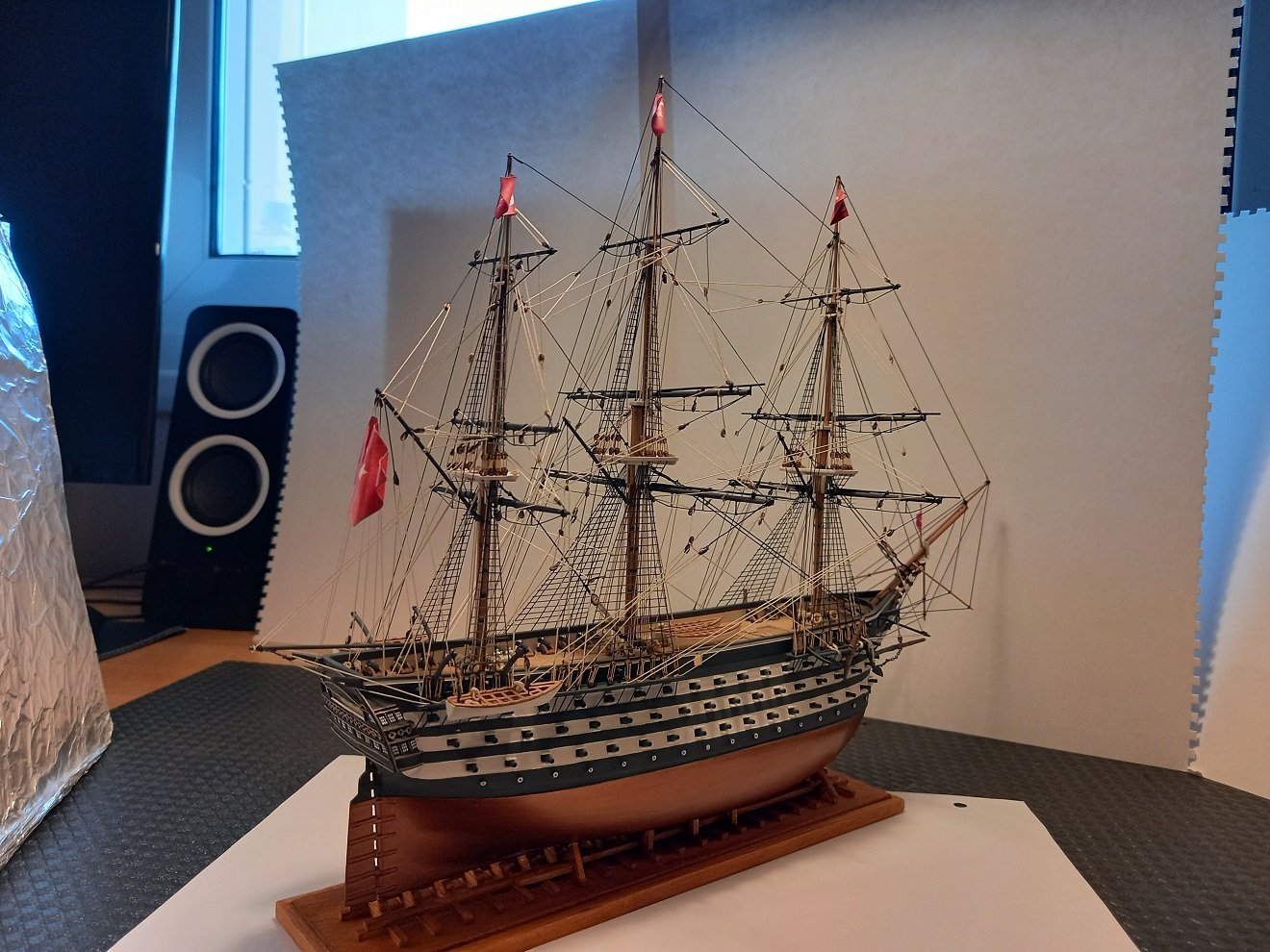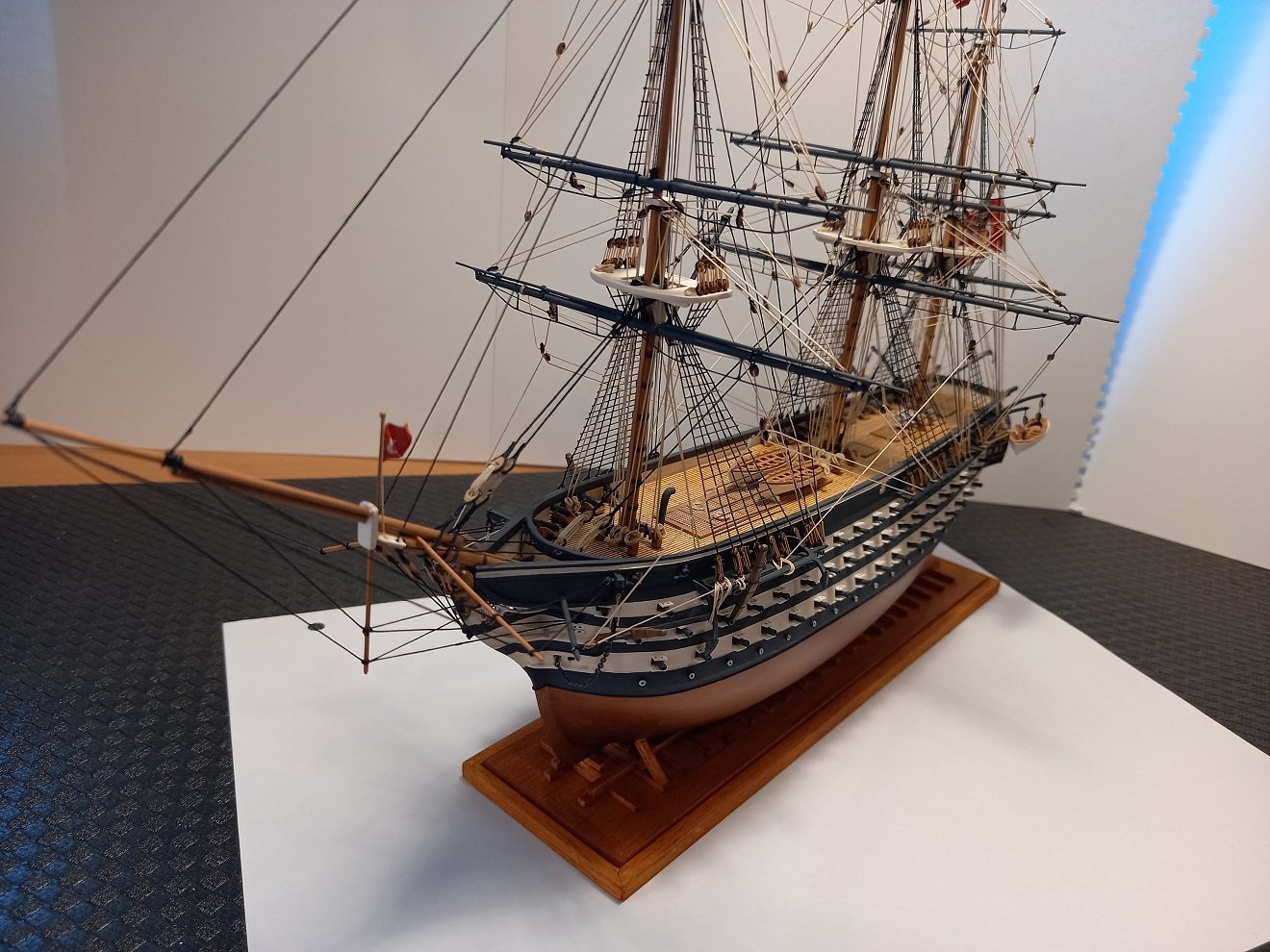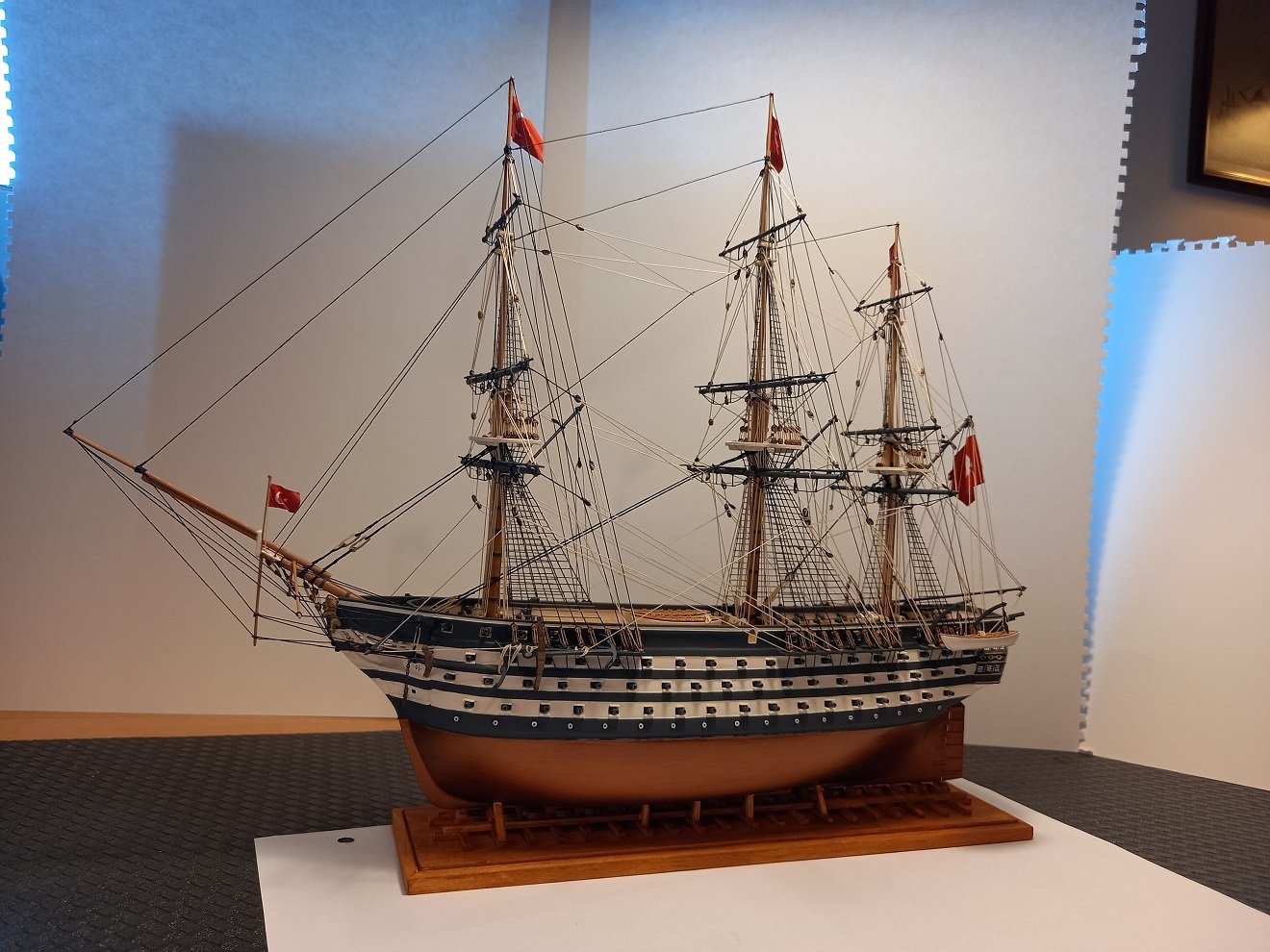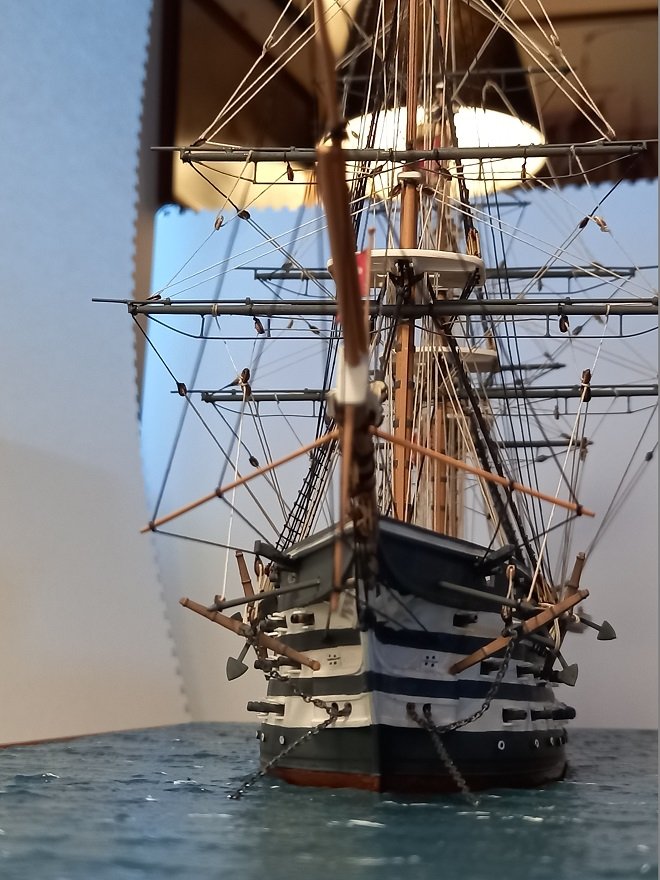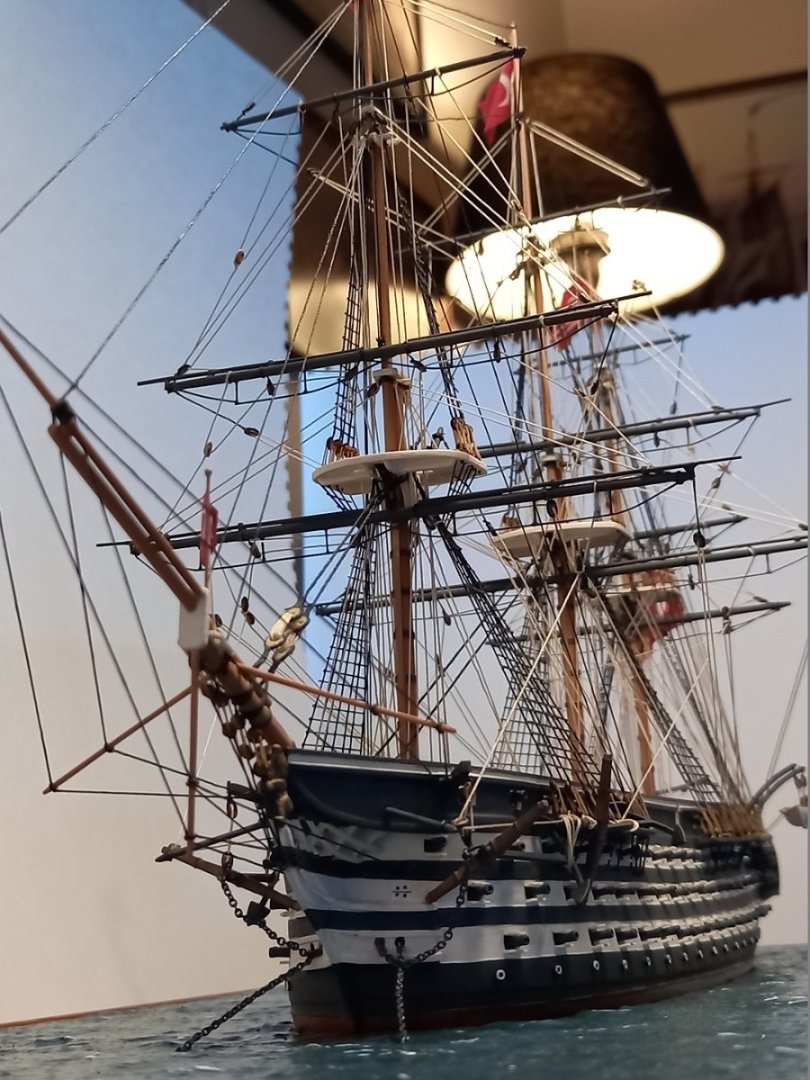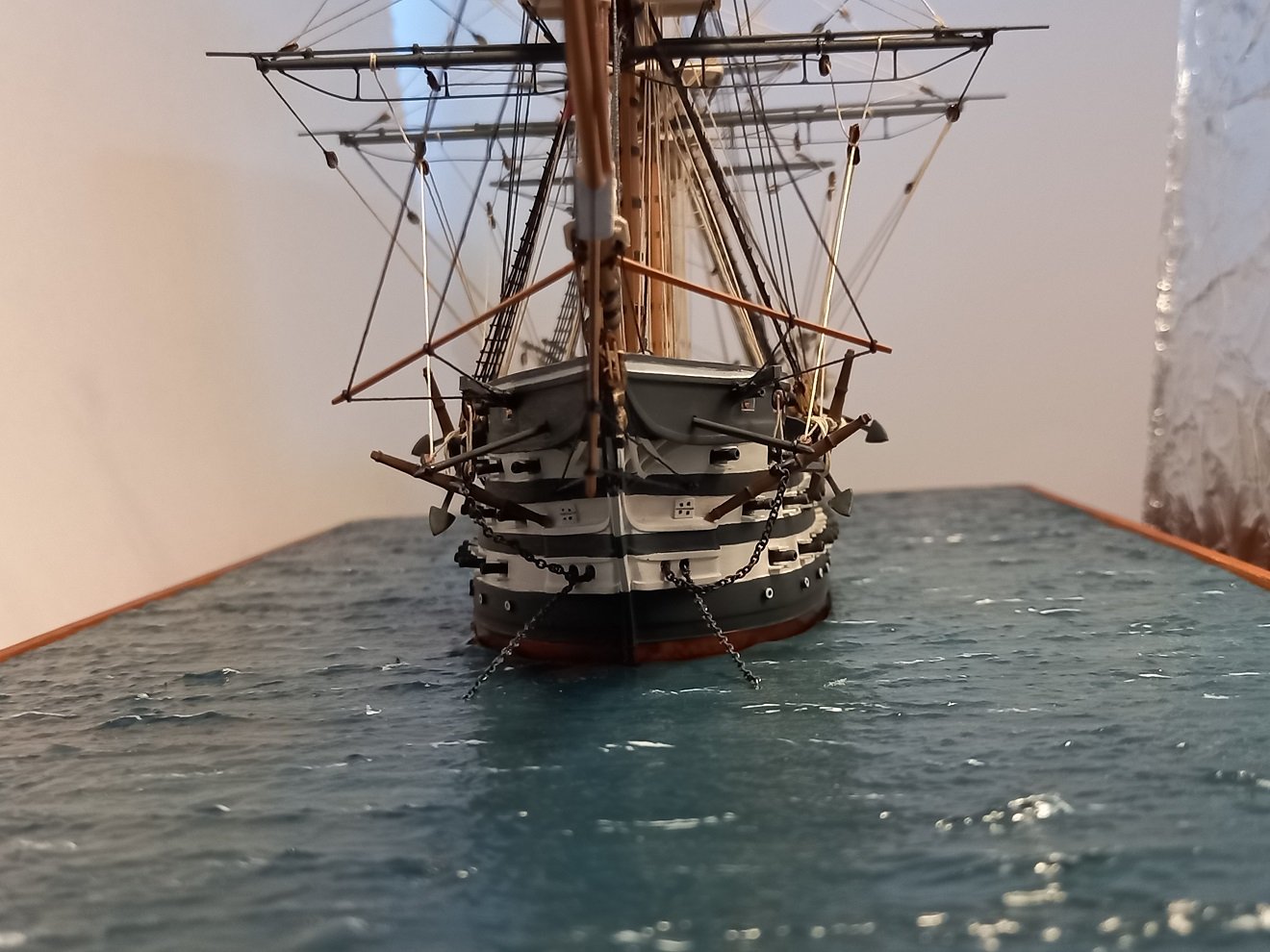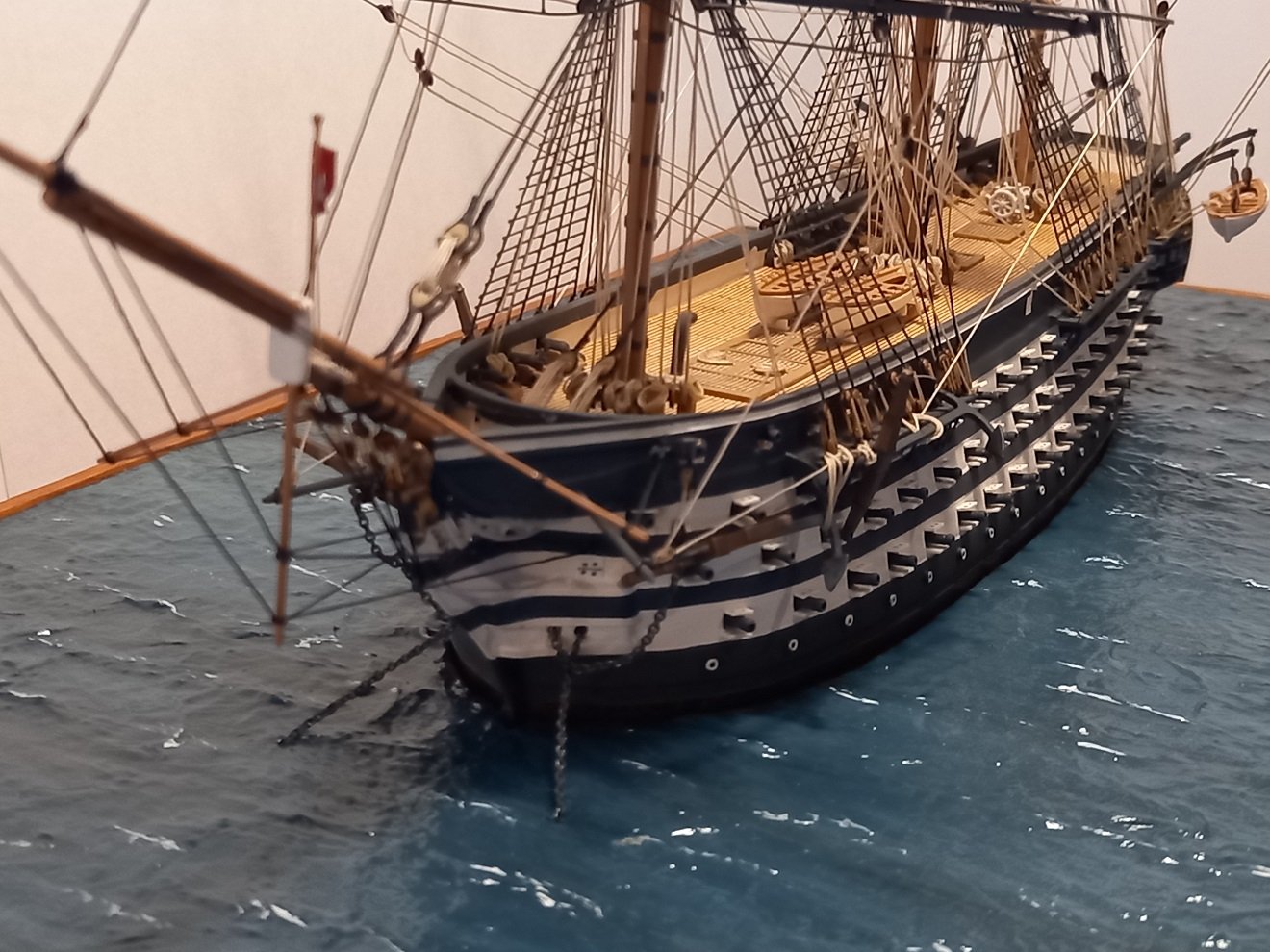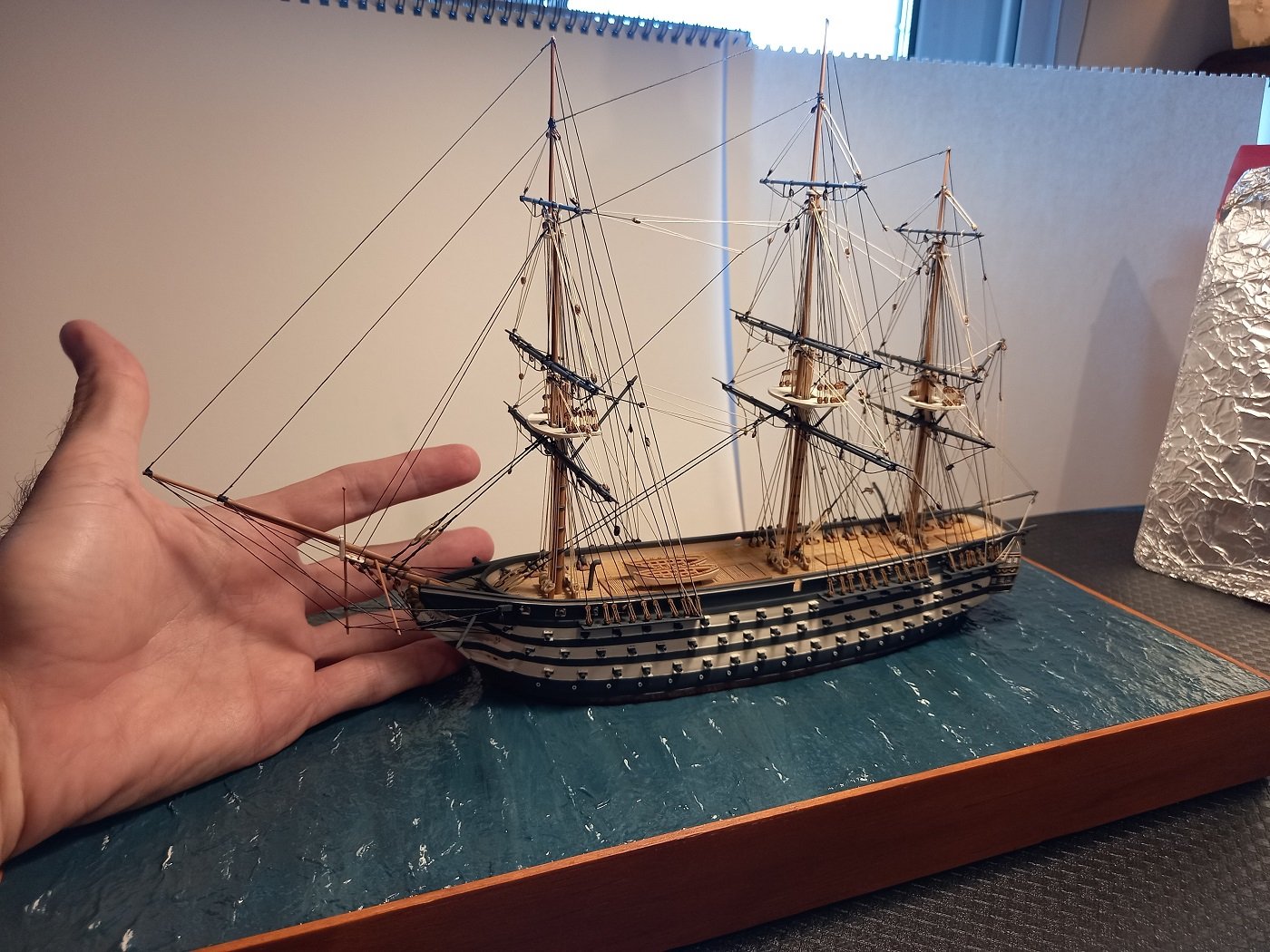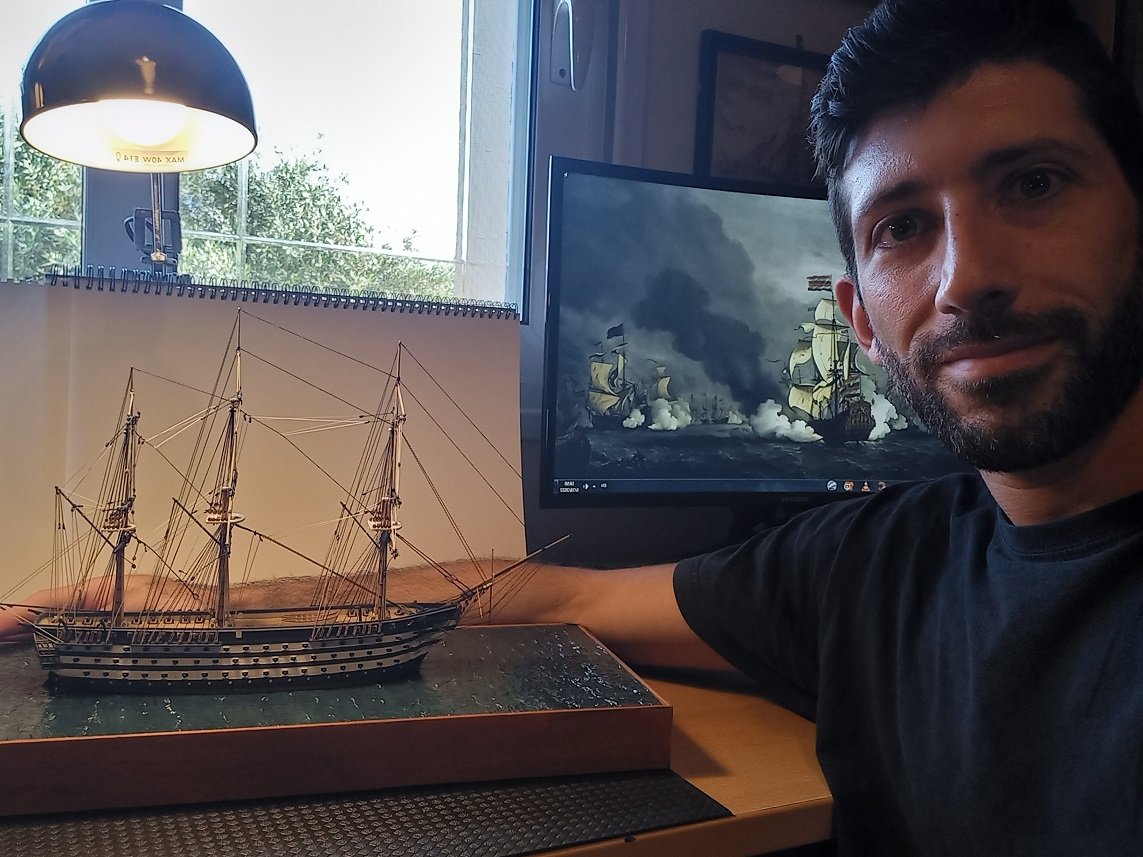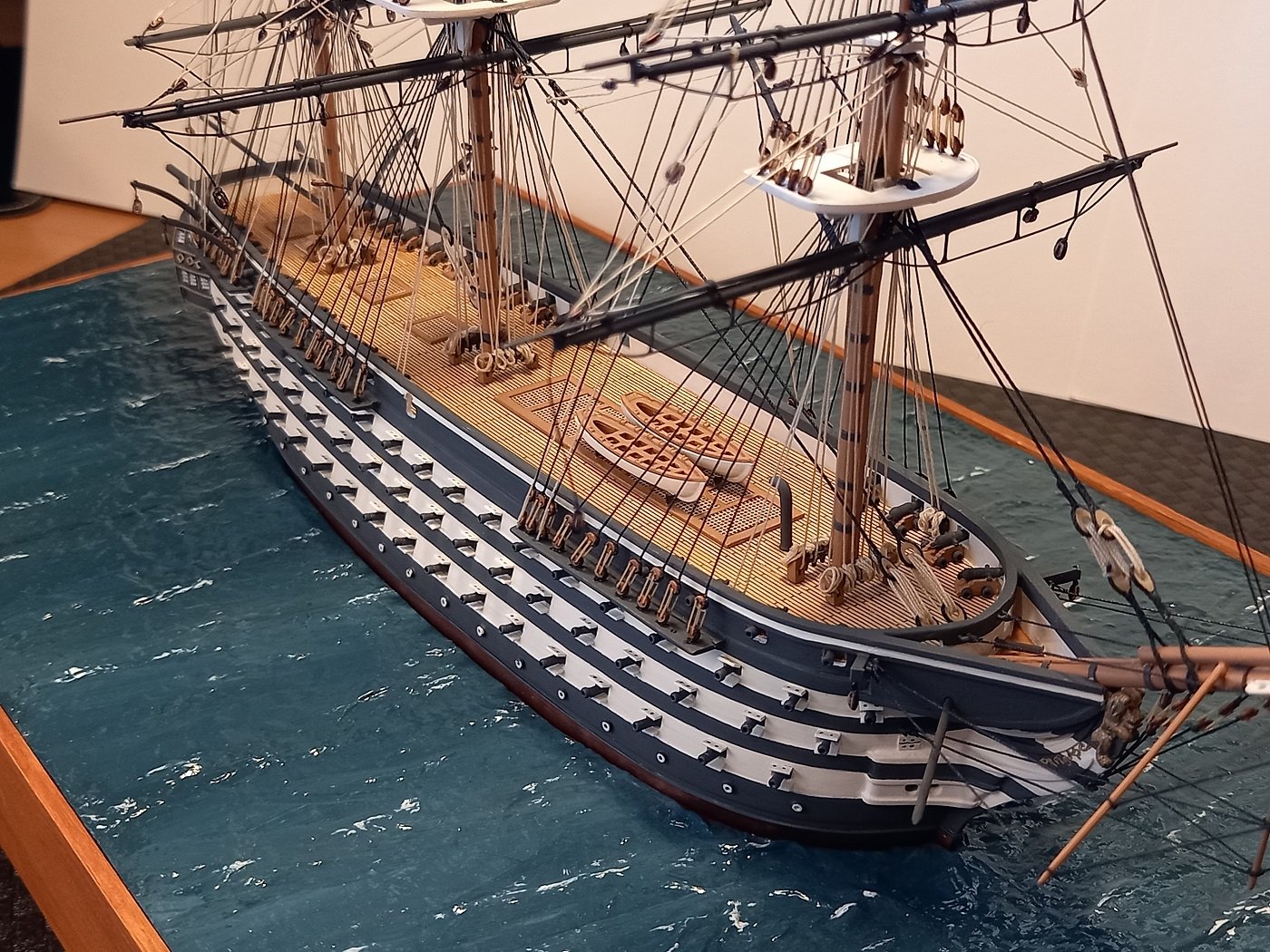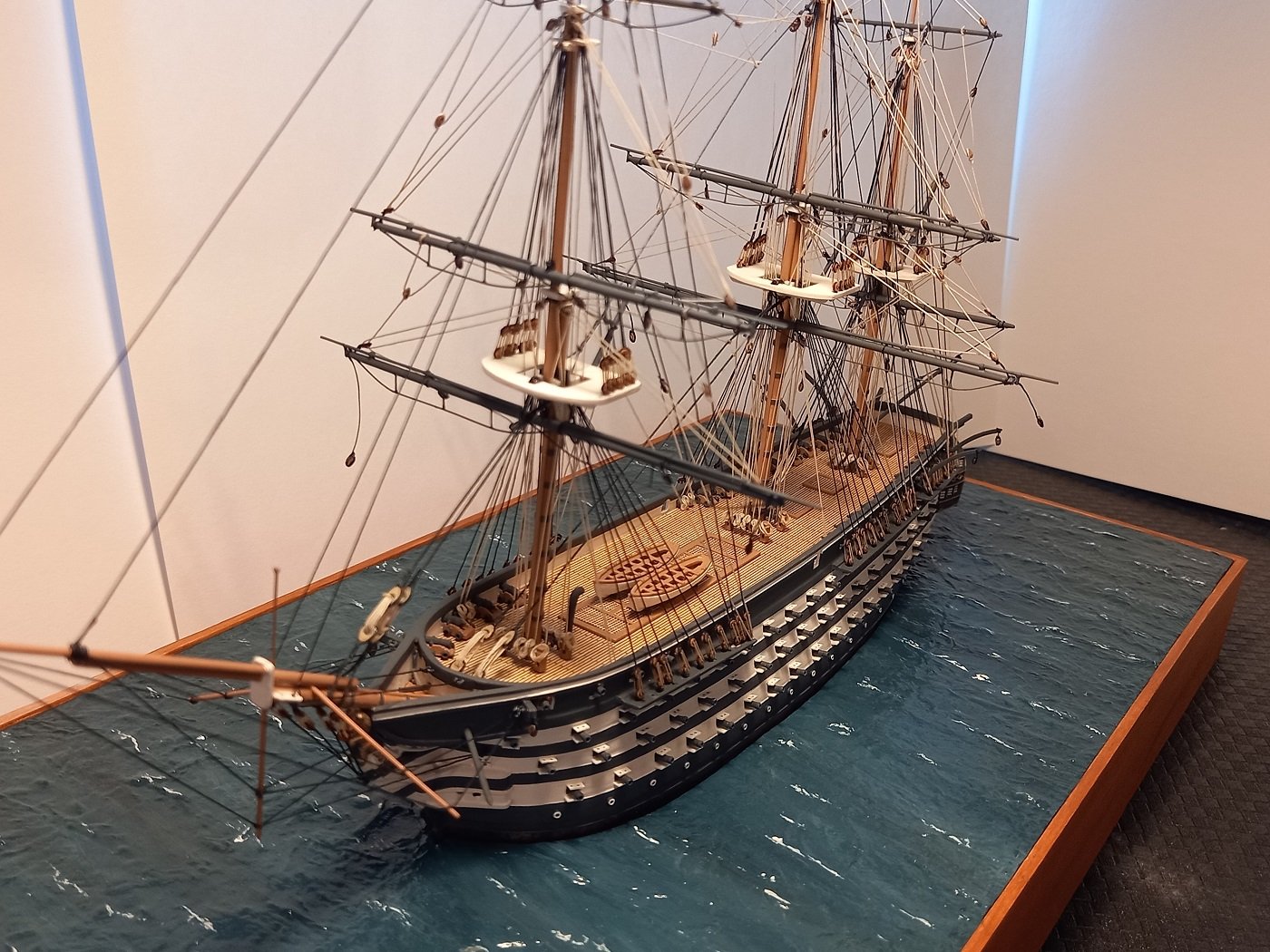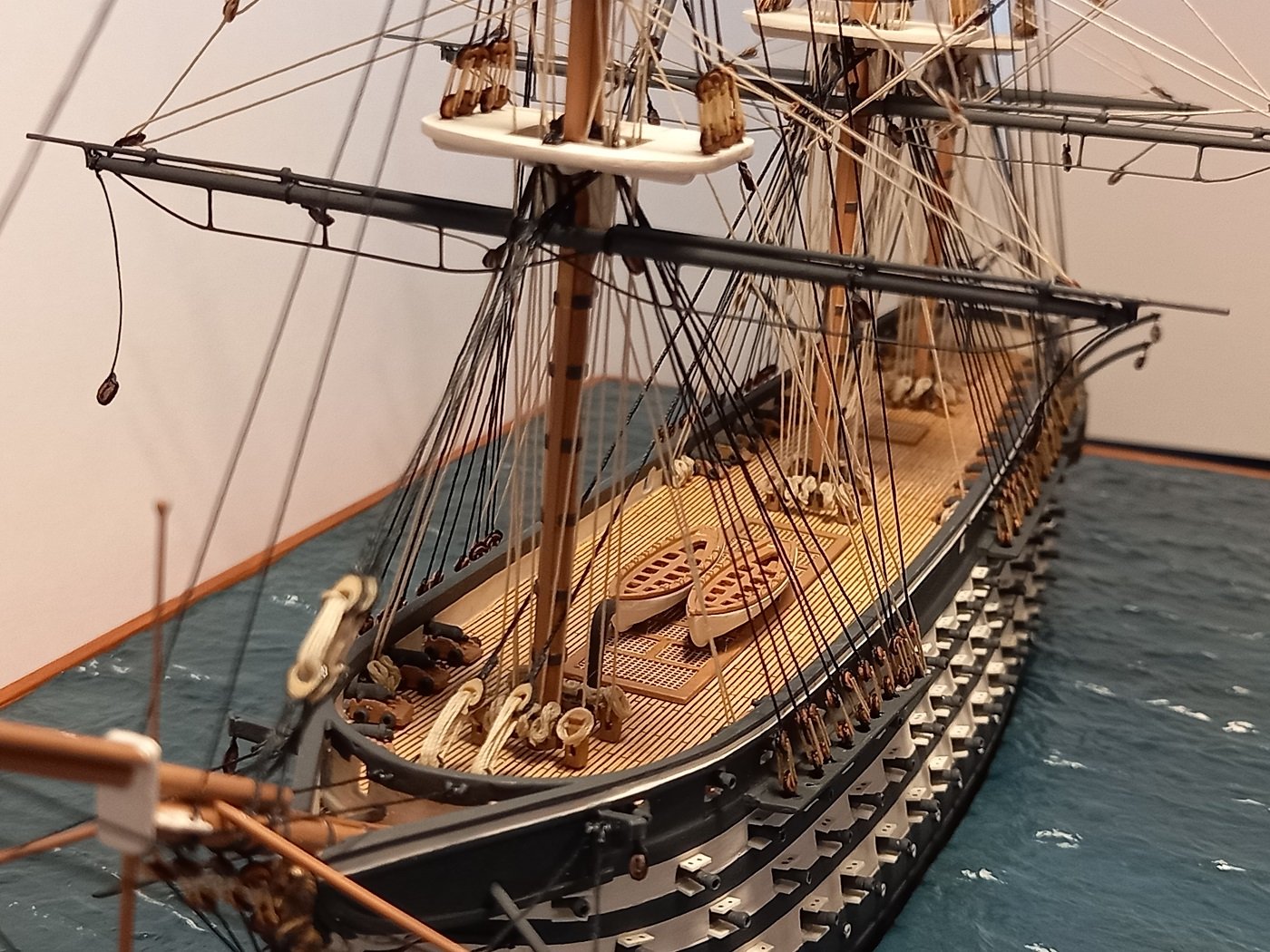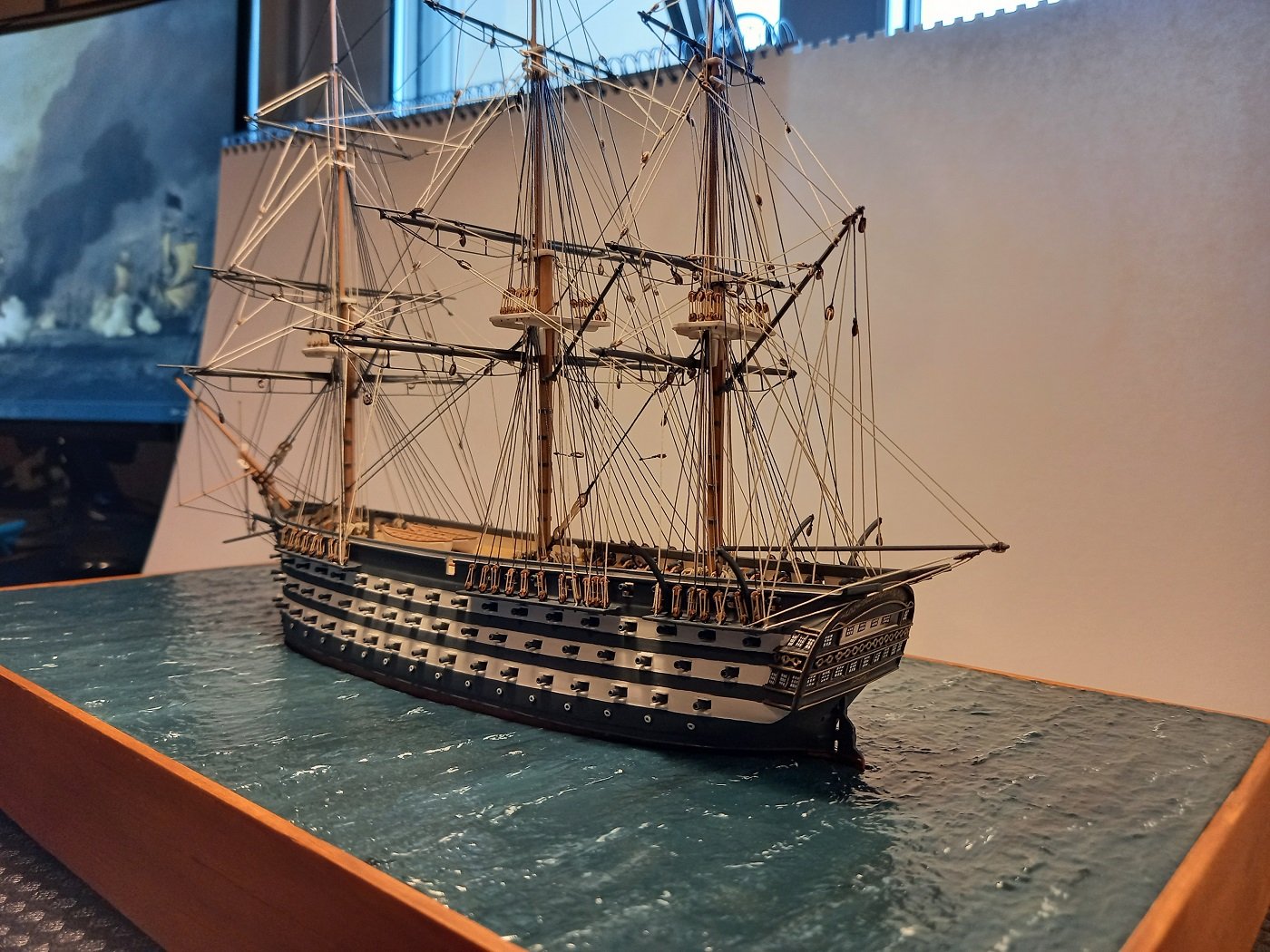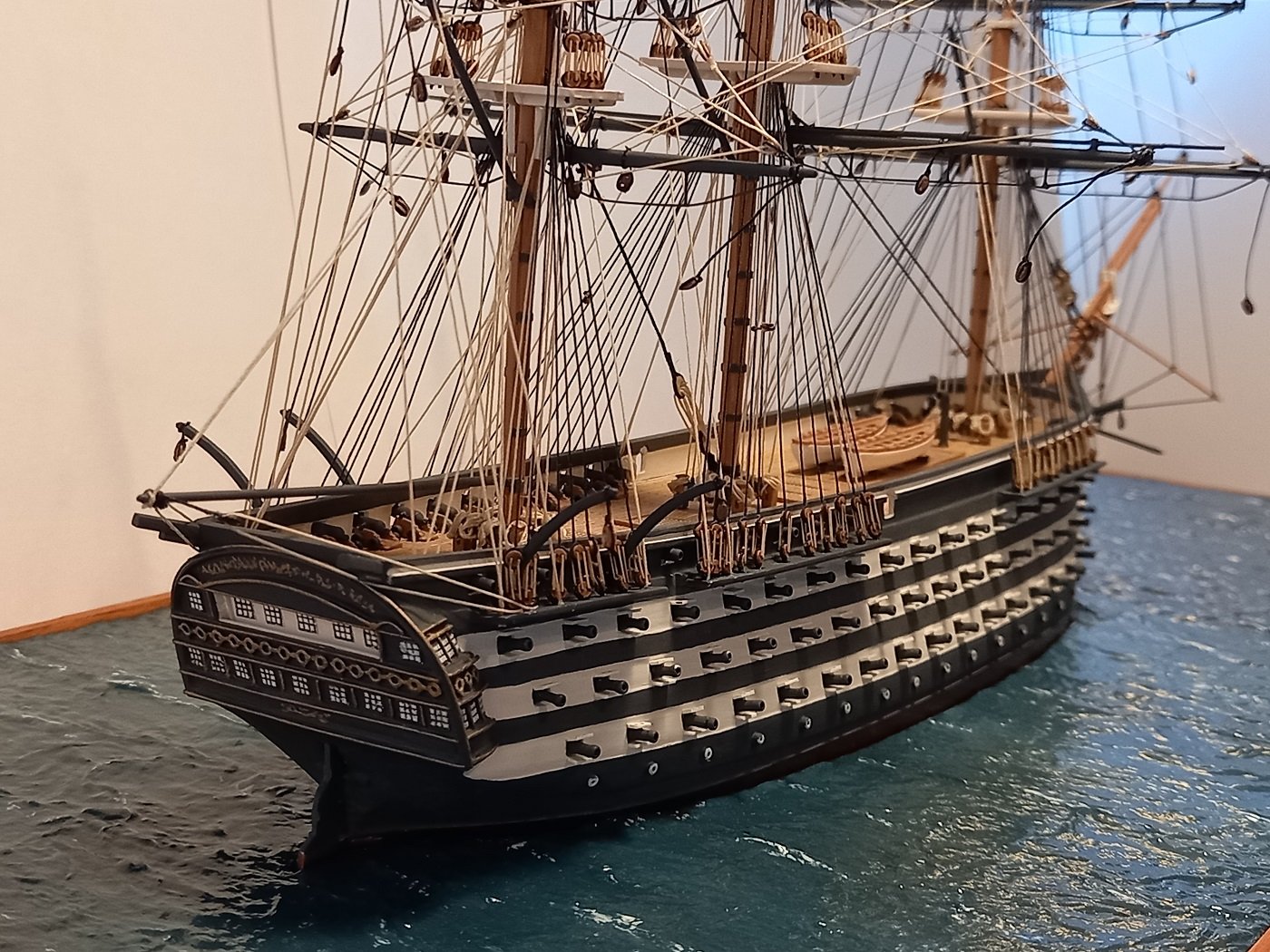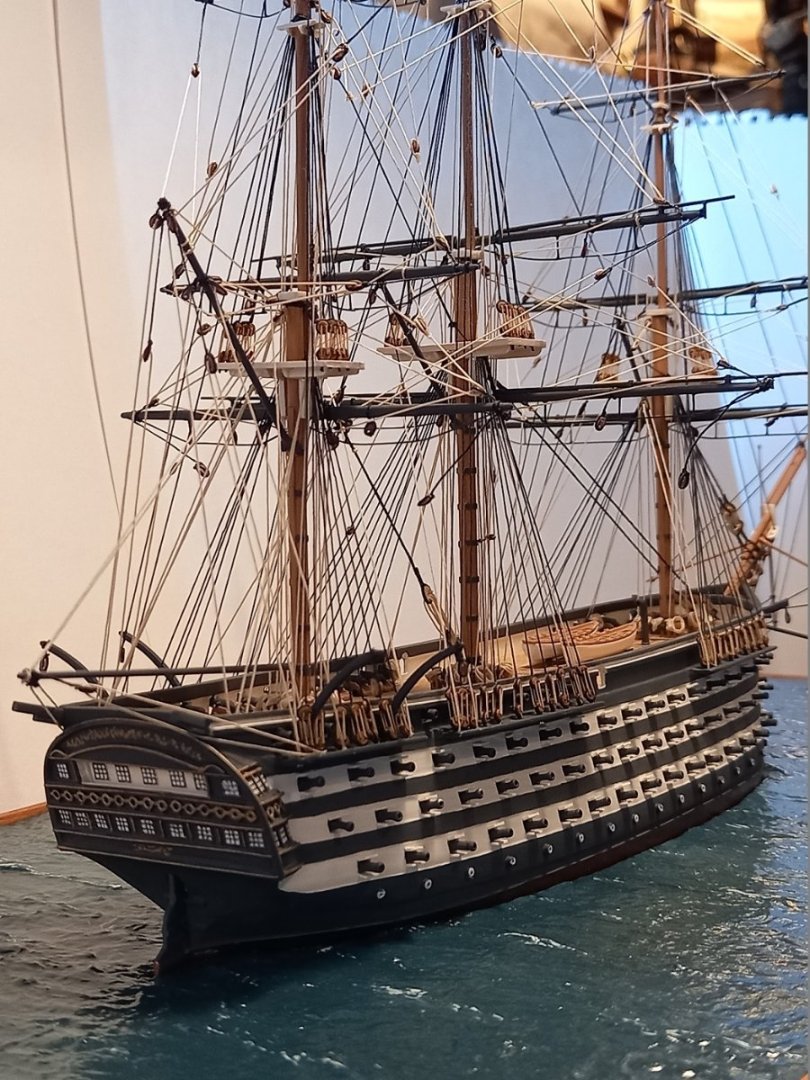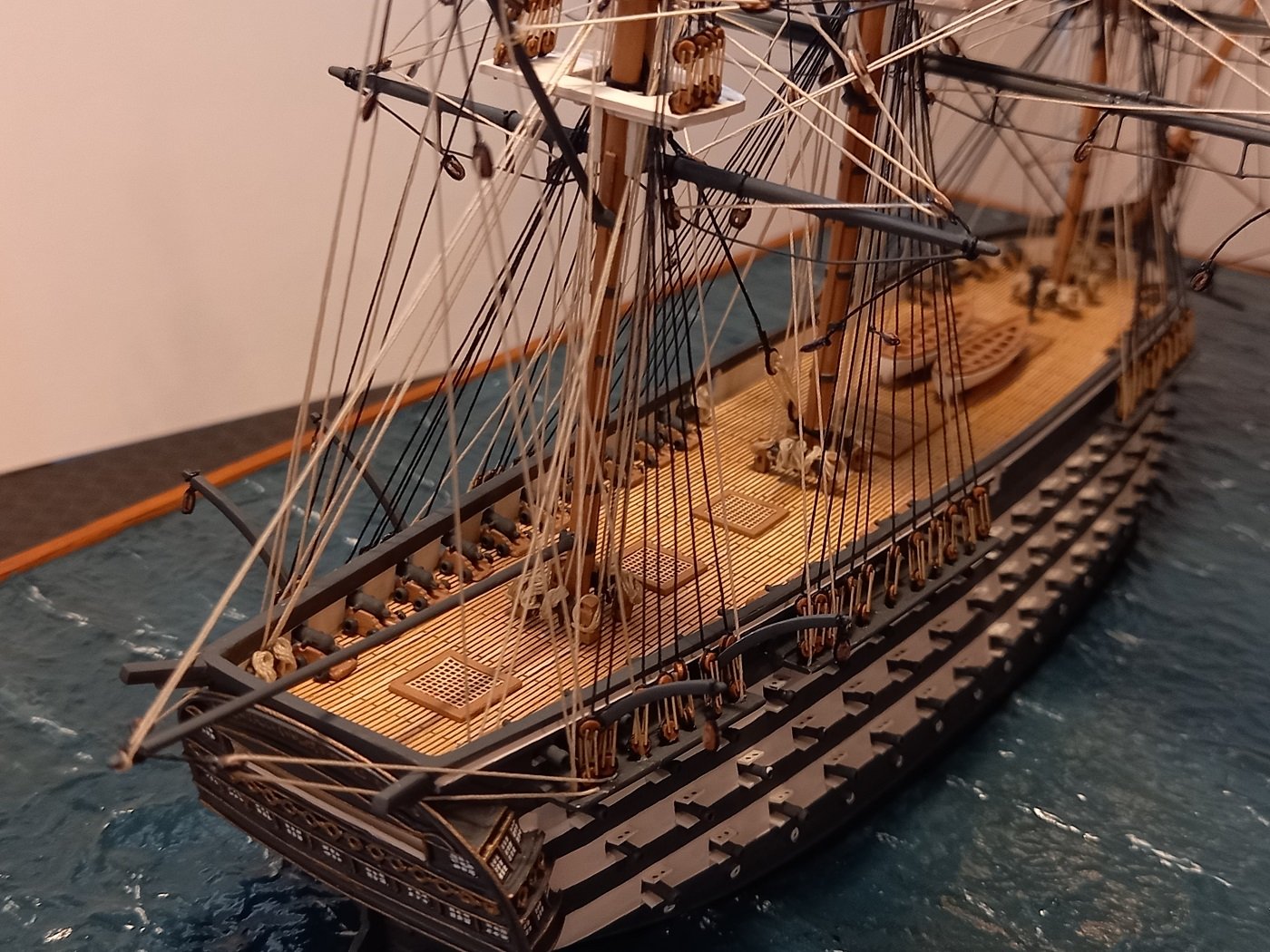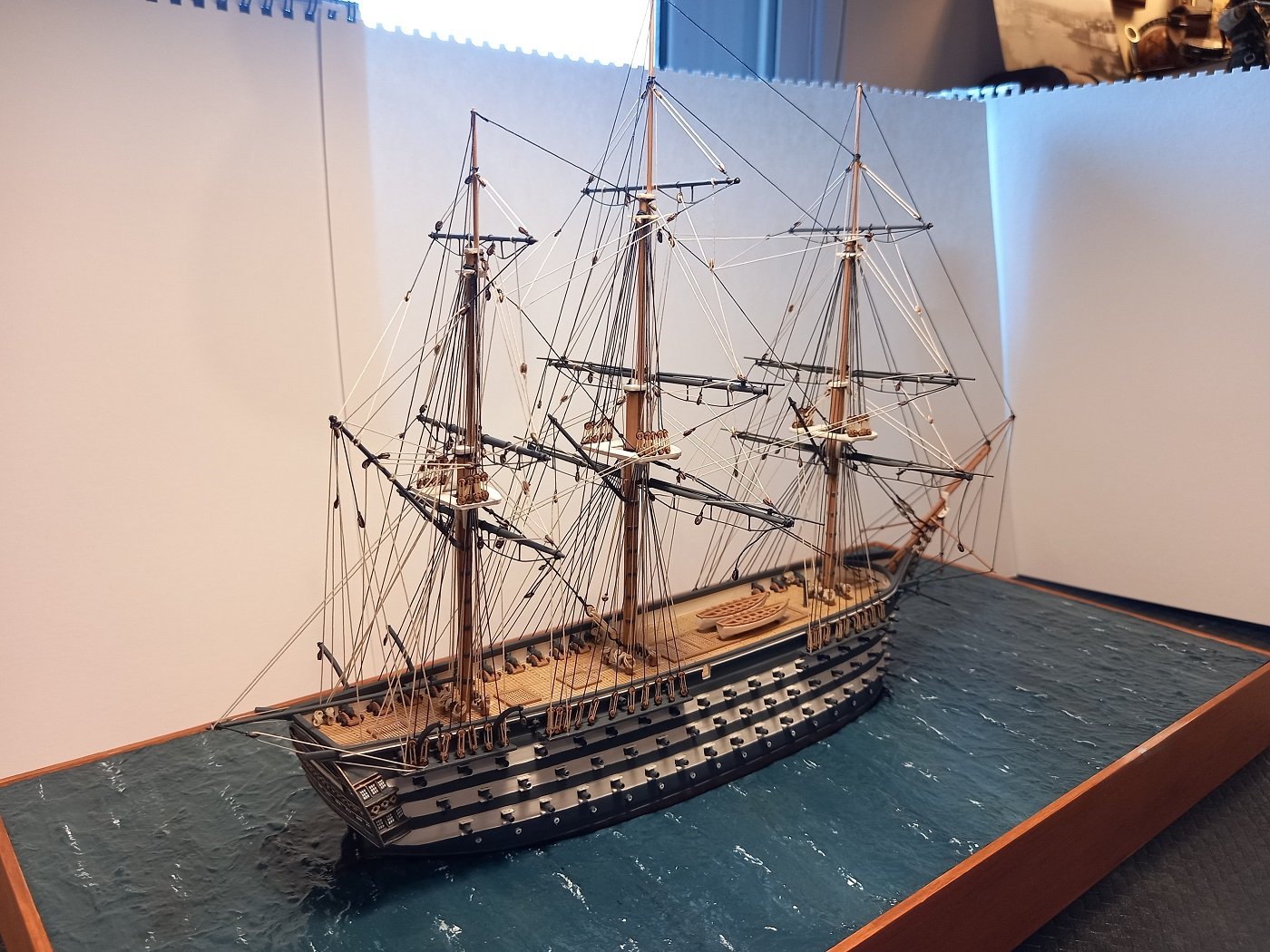-
Posts
297 -
Joined
-
Last visited
Content Type
Profiles
Forums
Gallery
Events
Everything posted by GeorgeKapas
-
Now, this is some interesting part. The hull required coppering, but in this scale, I could get away with simply painting copper color on the flat surface. Also, since it is tiny, one could just put it in a sea diorama base and dont bother with the hull. But I went through so much to design and make the plans and the shape of hull of the ship that it was not an option to just hide it. I went over many threads of fellow modelers here, of how they approach coppering the hull, but none really were of any help in this situation. So the hard path approach it is... I drew the lines of each plate, first the horizontal, then the vertical to create the pattern of the plates on the hull, and then put 0.25mm thread on it....After soaking it with cyanoacrylate glue, I sanded it very lightly, and slowly moved up the hull...
-
The above process is something I'm going to follow with all my later scratchbuilts, it is rather unique and time consuming tbh. But considering there are few projects in this scale, and I'm happy with the result, it is what it is. Here I was starting to add more details in plastic: chainplates, catheads, rail details, defined the waterline and a pre-assembled the mast pieces. The surface still needed filling in places, as late as this stage. The stern began to take shape, following the photographs of the real ship.
-
The hardened paper and plastic surface was then sanded down and filled with humbrol filler. After sanding this down again, it was coated with an enamel spray paint to seal it and protect that layer. Then I did this again a second time making the whole model look and feel like it was made out of smooth plastic. I encased the keel with polystyrene plastic as well. I have various thickness sheets of it, but for this scale it was mostly 0.3 and 0.5 mm thick.
-
Afterwards I "planked" the hull with thick paper, which was in turn soaked in cyanoacrylate to harden solid. Added the keel, and after this point, I switched to polystyrene plastic sheets to build the rest of the model, following the frame lines to finish the gunports to the level of the main rail. This is similar method I used on Mahmudiye, but this time with much harder material, plastic and balsa instead of paper and foamcore.
-
I use very thin (1mm-2mm) balsa pieces so I can cut them with the exacto knife, the scale is very small. I reinforced the balsa for the keel and hull frames by glueing thick paper on both sides before cuting the shapes, and then soaking the outside edges with cyanoacrylate glue. The filled the frames with balsa stripes and then sanded it down. Even at a stage as late as this, I had to make corrections to the hull lines, and go back to the pc to update my last drawings. That below is the full extent of my use of balsa on the model.
-
Ares is possibly the most famous ship of the Greek revolution, but unlike the rest on the list, there are no plans of her. She actually survived till 1920s and many photos and paintings of her exist. Yet, with the exception of the dimensions and the number of guns, no more information survives. The models that apear in the various museums seem to be rather different from each other and are rather crude. There is also a wooden kit of her from "Navarino Models". After inspecting it, I was not satisfied, her lines bear little resemblance to the visual evidence, at least as far as I see it. A few years ago I found out about a project from National Technical Univercity of Athens, funded by Laskaridis foundation, to make a model of Ares and test it on a water tank. I saw the presentation, and in my disappointment, their design is also a conjecture. In fact, it was wildly off, both in shape and propotions, more so than the Navarino kit, which at least had an early 19th century brig design in mind. All I had were photos and paintings, books like "The history of the American Sailing navy" etc and some french brig designs (Ares was build in Venice, so not very helpful). With little experience in drawing plans, I drew lines on the pictures and paintings in layers, printed them, hand drew them again, assempled test hulls in paper, cut and sanded them, went back to the computer to drew the modifications etc. Rather brute force approach, with only the dimensions and number of guns as a known element, while for the rest it was matching the lines with the photos by eye. Even that was a problem, as 1890s Ares was significantly altered from her 1820s appearance, and the Roux painting of her was of limited use. I knew that she was a rather rounded brig, high sided, as she was a cargo vessel. Long story short, I ended up with a design that satisfied me, which was enough. It came out much different than other models of her, so in that sense, I feel it was worth the effort. This design will be properly published after I finish with the model, but hopefully in a more organized way.
-
Good evening all! I have not posted for quite a while, not because of a lack of projects and modeling, but due to other issues, like moving house etc. That said, the new place has enabled me to set up a proper permament workshop. Although several plastic kits and some scratchbuilts are still unfinished, I decided to embark on a more holistic and focused project, after my experiences with the scratchbuilt Mahmudiye, that I finished back in 2022. The idea is to make a series of scratchbuilt models of Greek revolutionary ships and beyond (all dated between 1821-1899). These projects will all be at the same scale, that of 12 feet to the inch (1/144), a traditional scale, which felt comfortable to me, starting with: The brig Ares (1819) The frigate Hellas (1826) The steam sloop Karteria (1826) The ship of the line Emmanuil (1824) The corvette Loudovikos (1838) Almost all these are at least at an initial stage of construction, Hellas being quite advanced, but I decided to finish the smaller Ares first. I'll post threads about all of them eventually, and have changed the links on the signature.
-
Thank you all, and again, I have neglected to post updates in my threads, or even start new threads of completed models! I'll plan to do that now, and perhaps continue with royal louis which is indeed a nice built.
- 22 replies
-
- royal louis
- heller
-
(and 1 more)
Tagged with:
-
I hoped you enjoyed the city Ian! Yes, the red building oposite the lighthouse at the harbour's entrance, on the Firka fortress. Alas, I have diverted my attention on a small built of La Couronne, rather unwisely. But this too fell short, perhaps a move to bigger builts is needed, once bigger workspace is available
-
Thank you all!!! Oh well, Karteria is well underway, but unfortunatelly rather stalled due to the lack of details of the Brent plans.... We'll see how it goes...The water is made by by applying tissue paper and woodglue into a few layers, and then form the waves with a brush. I found something similar done online and developed a method of my own based on that, to me it seems quite bizzare that not many do it like that.. anyway. The deck is simply a patern I drew on MS paint and printed it in black and white, then painted it with acrylics and sealed it with enamel clear coat. Nowdays I make another small model of the "La Couronne" (1636) mostly for my own pleasure, testing some new methods and materials, but in the general philisophy of these builts. I'll make a thread soon enough!
-
A photo the day I donated her. Once she is in display I'll post more pictures. My next project will be of the steamship Karteria, for the museum here in Chania
-
Last photos! Thank you all for your kind words! This was one of my first scratchbuilt ships, and I learned a lot while making it. I am very honored that a museum accept it. 😁
-
So this is it, the end result. From here on, are the finished pictures I took of the model 2 weeks ago.
-
So here is the ship at 99% complete out of the water. These are the last photos I have of her as a full hull display, as she is not here anymore 😅
-
So here the ship is 99% complete. One can in theory remove her from the base and display the ship as full hull model. Since the previous post, some details were added and some changed, like the boats moved further aft etc. A few more pieces were still not added by this point, like boat rudders, etc, but I'll post more of the finished photos later. I added some flags that I printed and painted, the anchors were sourced from my parts heap but reduced in size a bit, the boats are also from parts and have been cut down to scale.
-
I put it in the typical position, top deck forward of the mizzen. The deck arrangement was not found so I followed the typical one, simplified
-
Tomorow I'll short out the pictures of the near finished model, here a couple more during this stage of the built with me in for scale
-
I made the base using tissue paper, woodglue and acrylic colours. Basically a papier mache with the woodglue and water that I shaped with a brush. I painted with acrylics then added another woodglue layer for gloss effect. I haven't made up my mind about the best combination of ingredients and methods for it, so each new base is slightly differently made. I went back after this stage and revised a few details on the ship even as late as this stage, but there is little point elaborating on it since I skiped taking photos on many of the stages to be honest.
-
So here the rigging process is well underway, the yard lifters and most of the standing rigging is in place 😅😁😇 You can also now see the base with the water ready. I'll elaborate next on how I made it
About us
Modelshipworld - Advancing Ship Modeling through Research
SSL Secured
Your security is important for us so this Website is SSL-Secured
NRG Mailing Address
Nautical Research Guild
237 South Lincoln Street
Westmont IL, 60559-1917
Model Ship World ® and the MSW logo are Registered Trademarks, and belong to the Nautical Research Guild (United States Patent and Trademark Office: No. 6,929,264 & No. 6,929,274, registered Dec. 20, 2022)
Helpful Links
About the NRG
If you enjoy building ship models that are historically accurate as well as beautiful, then The Nautical Research Guild (NRG) is just right for you.
The Guild is a non-profit educational organization whose mission is to “Advance Ship Modeling Through Research”. We provide support to our members in their efforts to raise the quality of their model ships.
The Nautical Research Guild has published our world-renowned quarterly magazine, The Nautical Research Journal, since 1955. The pages of the Journal are full of articles by accomplished ship modelers who show you how they create those exquisite details on their models, and by maritime historians who show you the correct details to build. The Journal is available in both print and digital editions. Go to the NRG web site (www.thenrg.org) to download a complimentary digital copy of the Journal. The NRG also publishes plan sets, books and compilations of back issues of the Journal and the former Ships in Scale and Model Ship Builder magazines.


